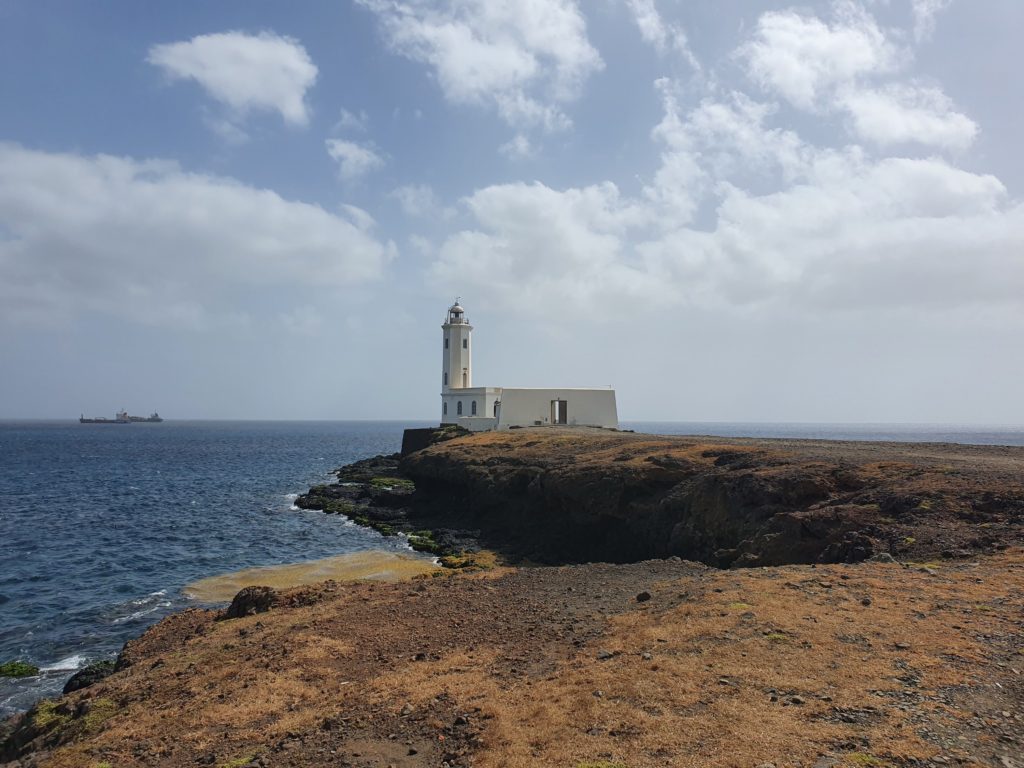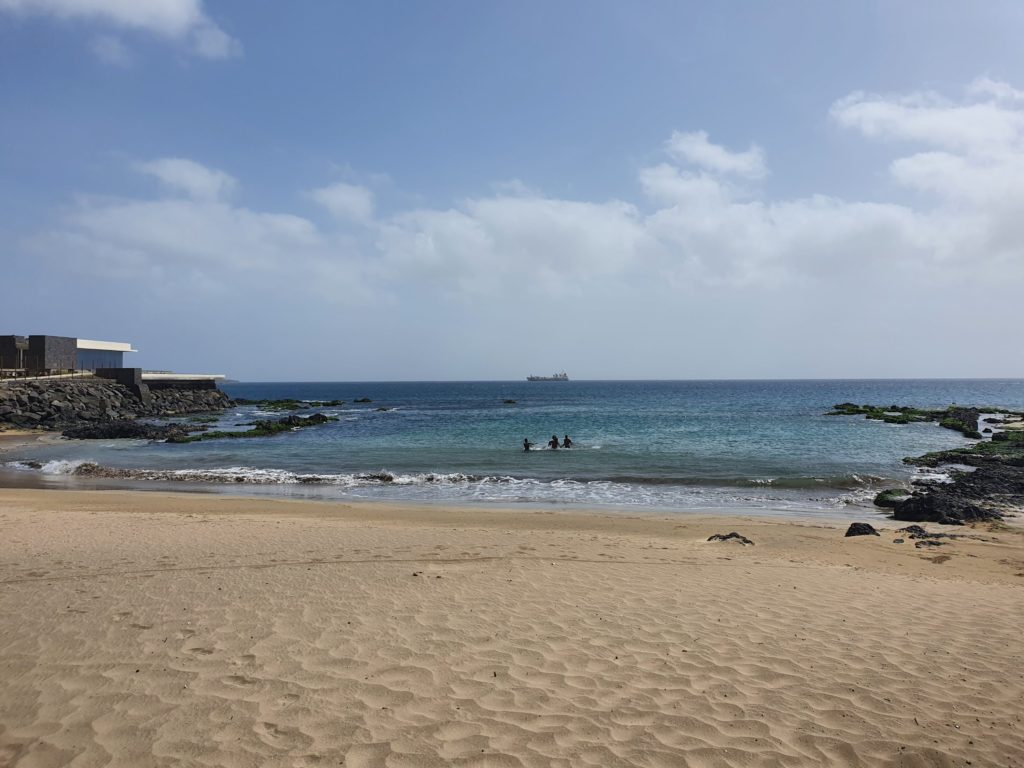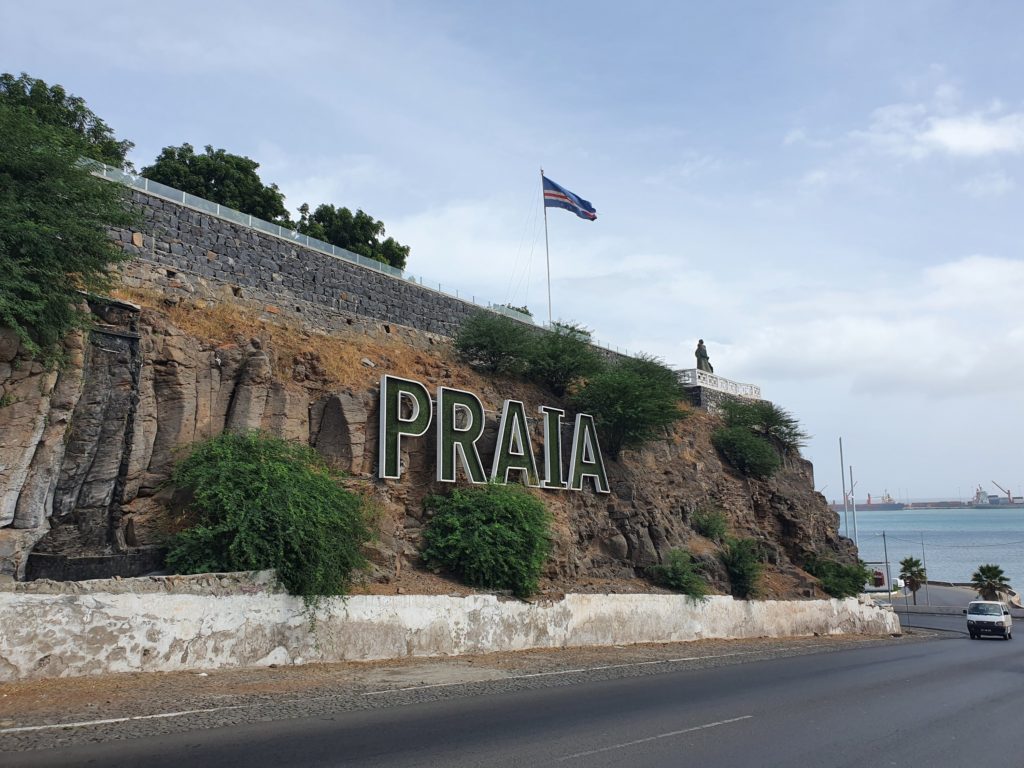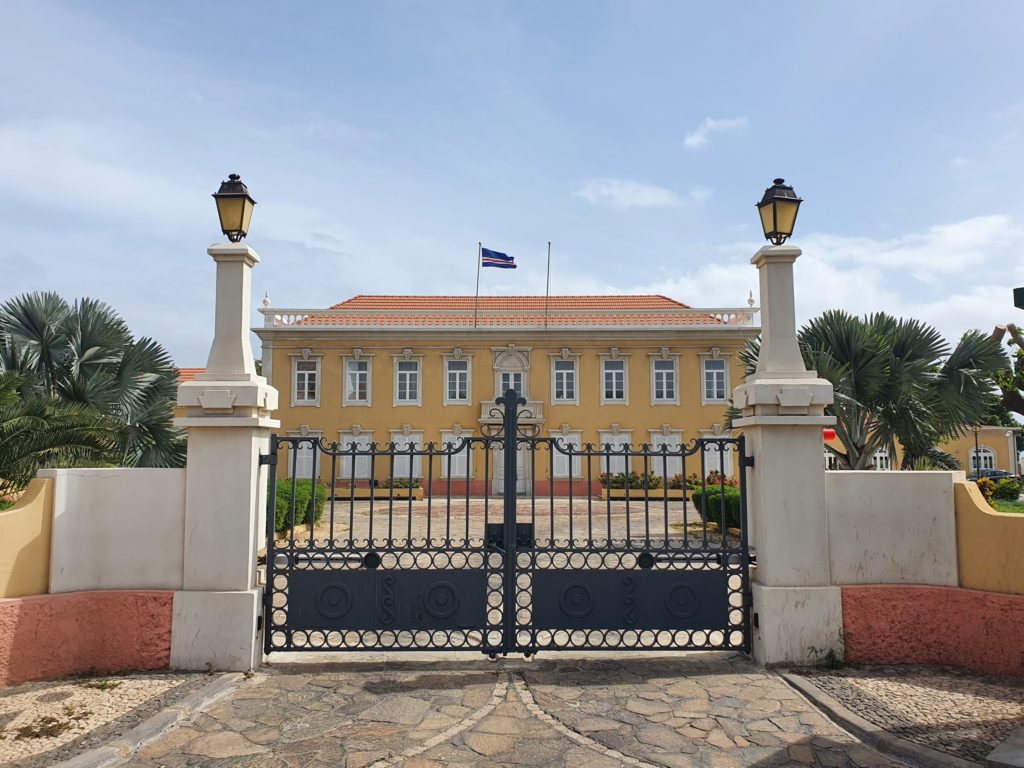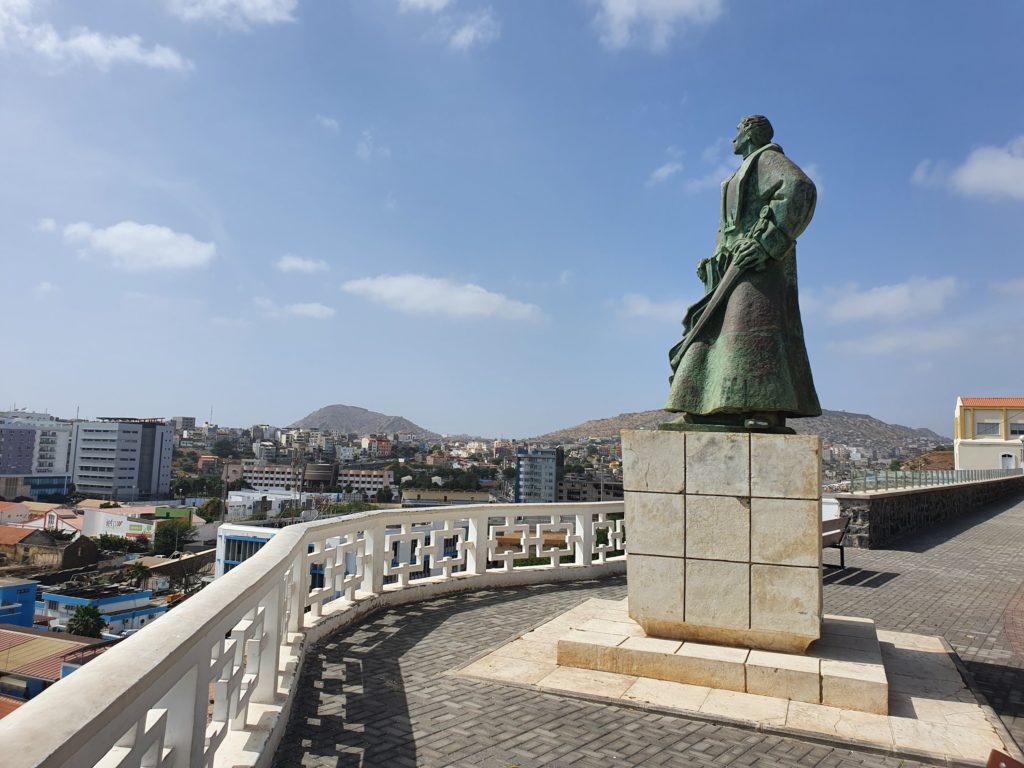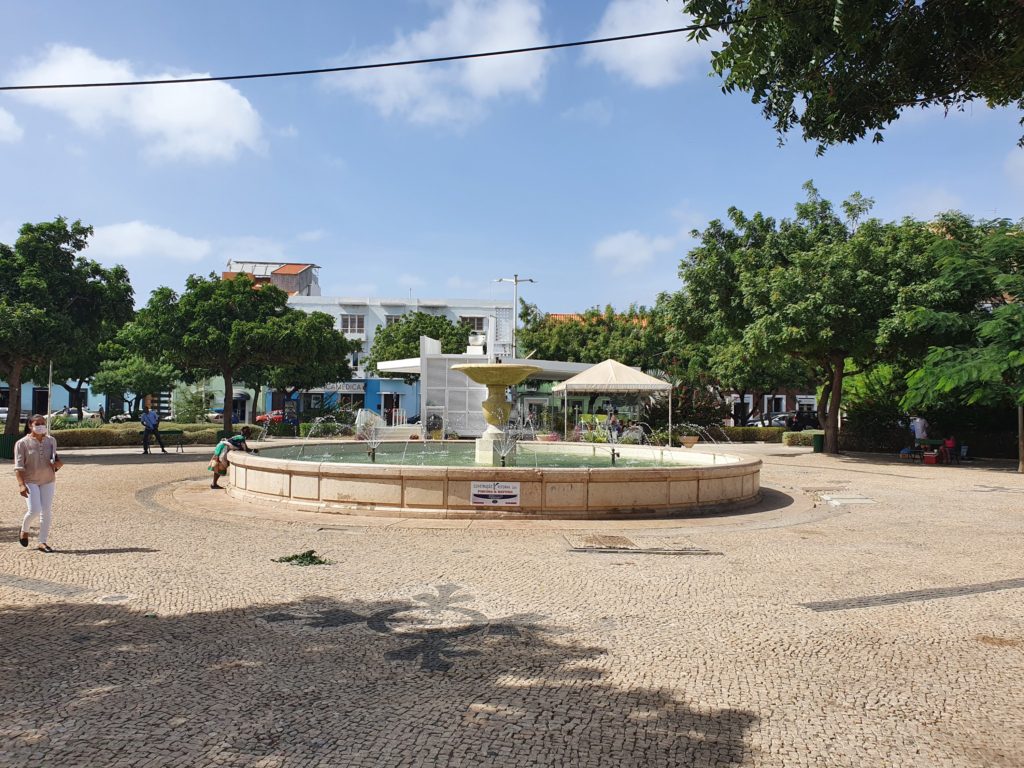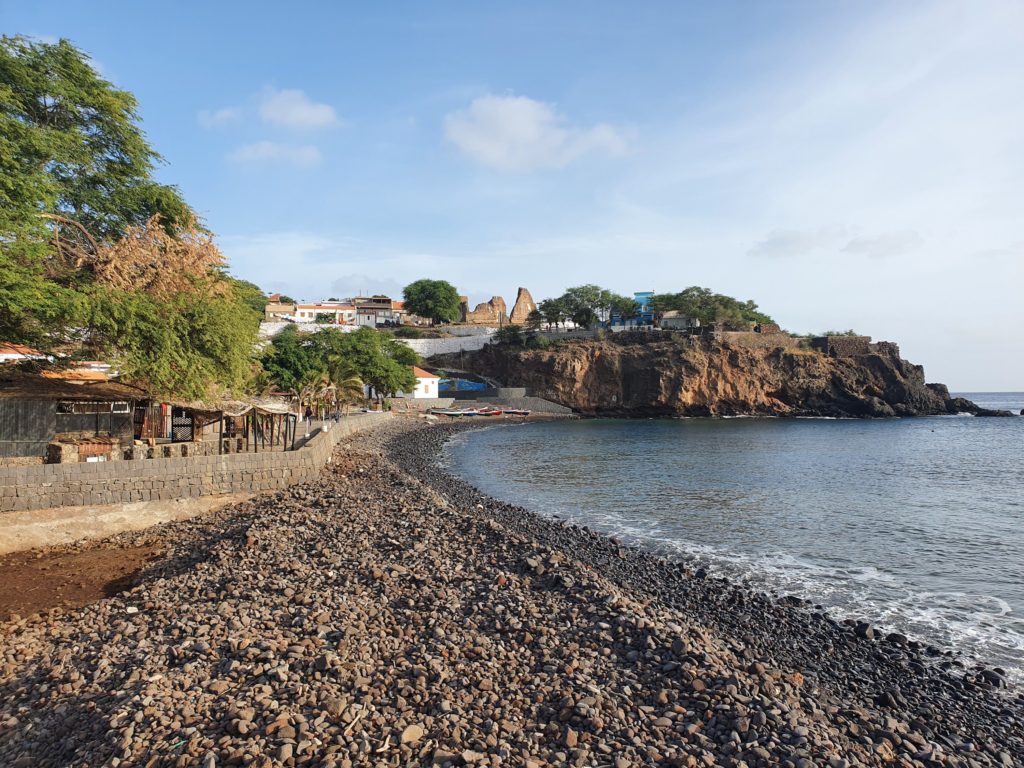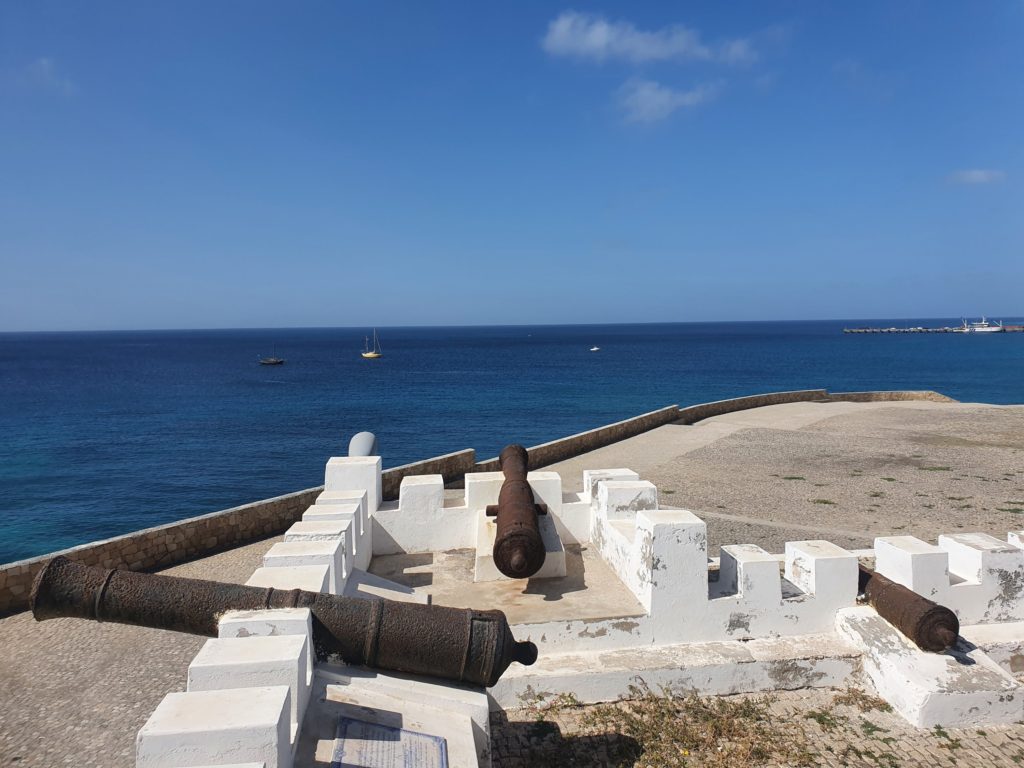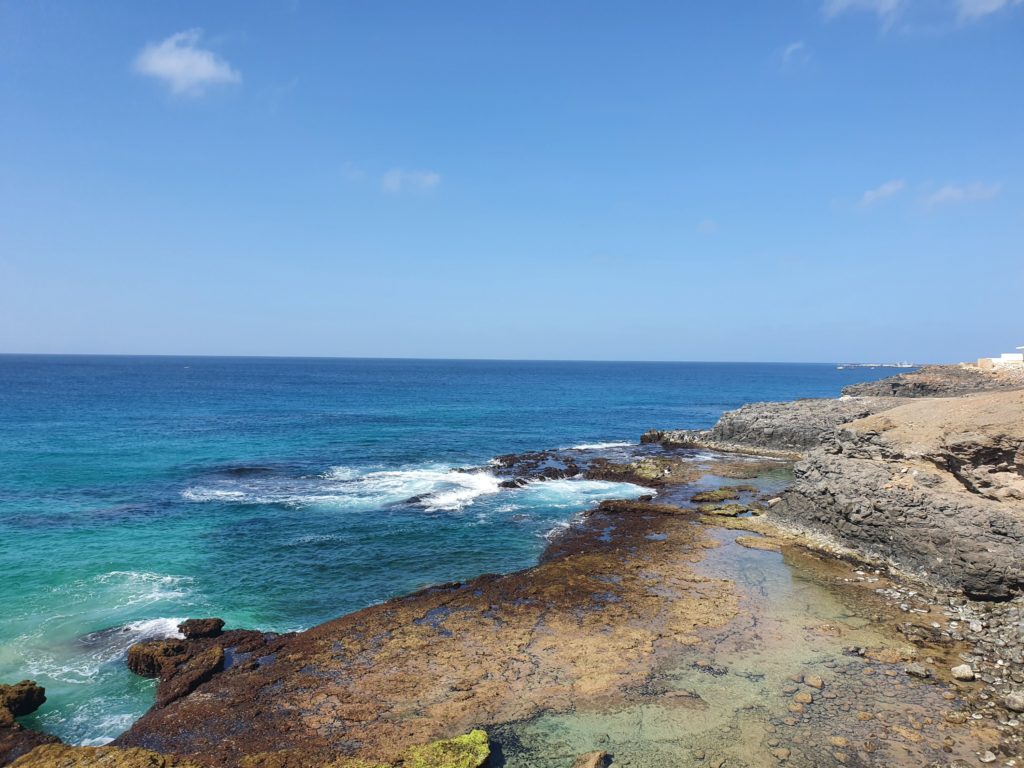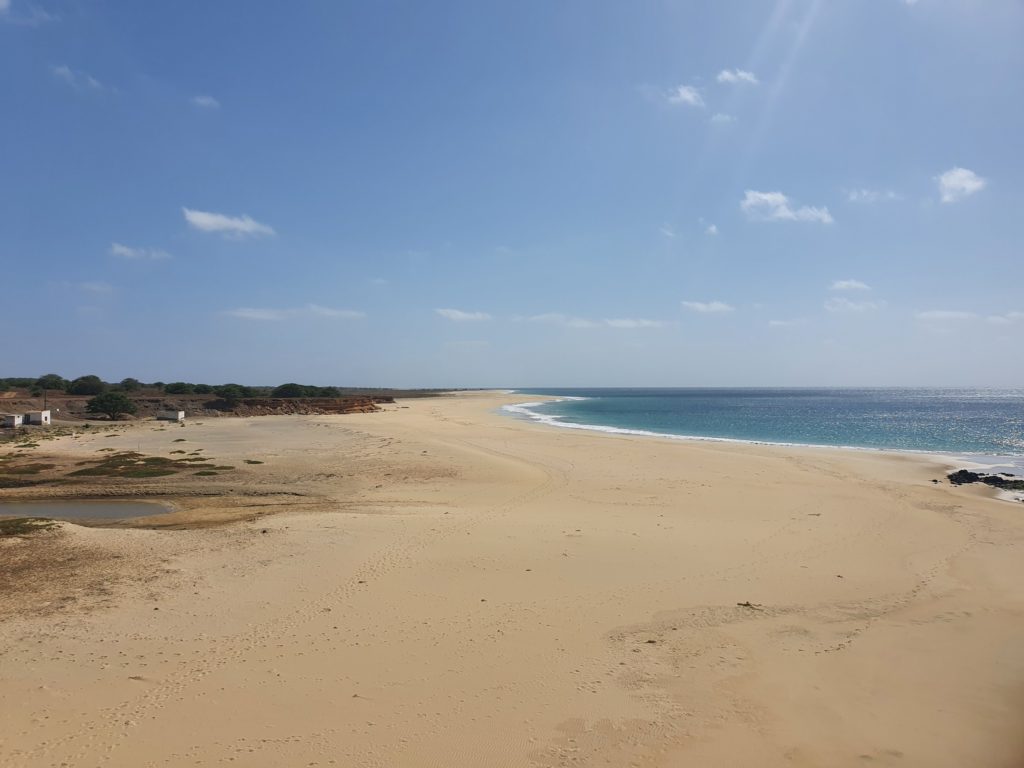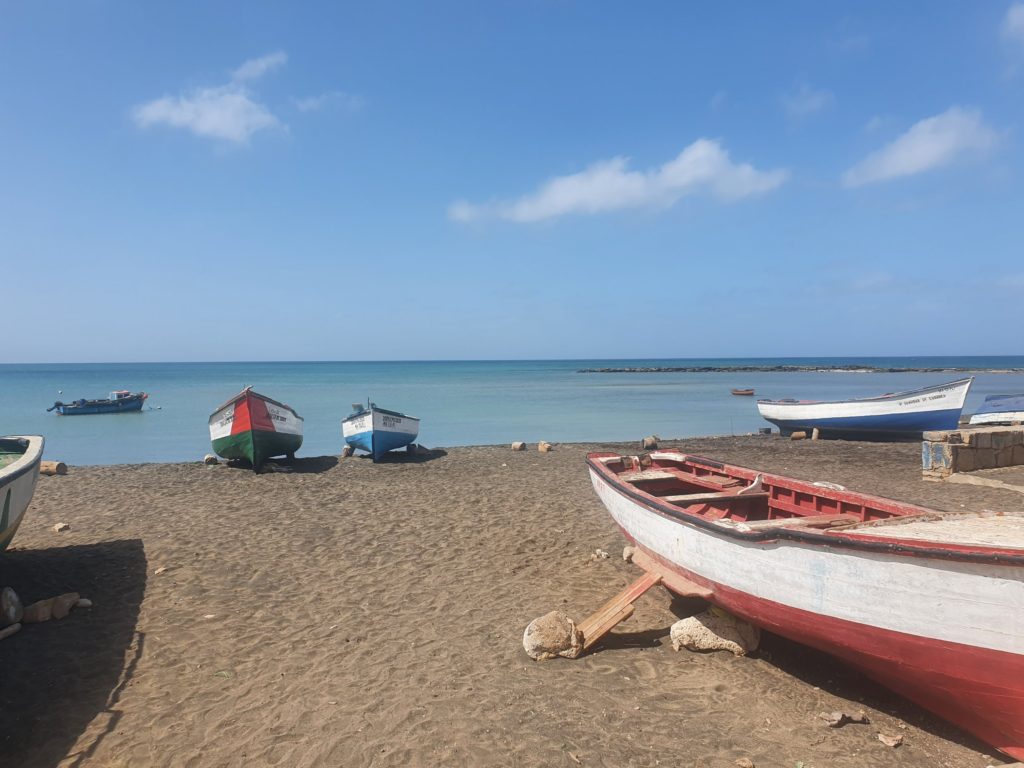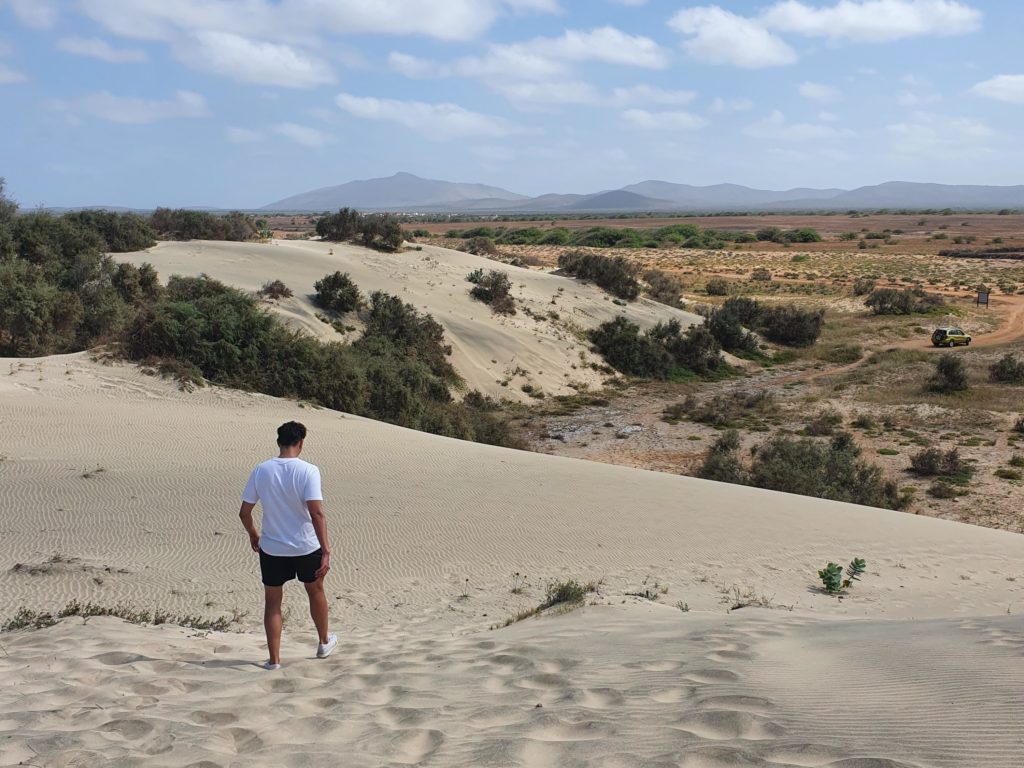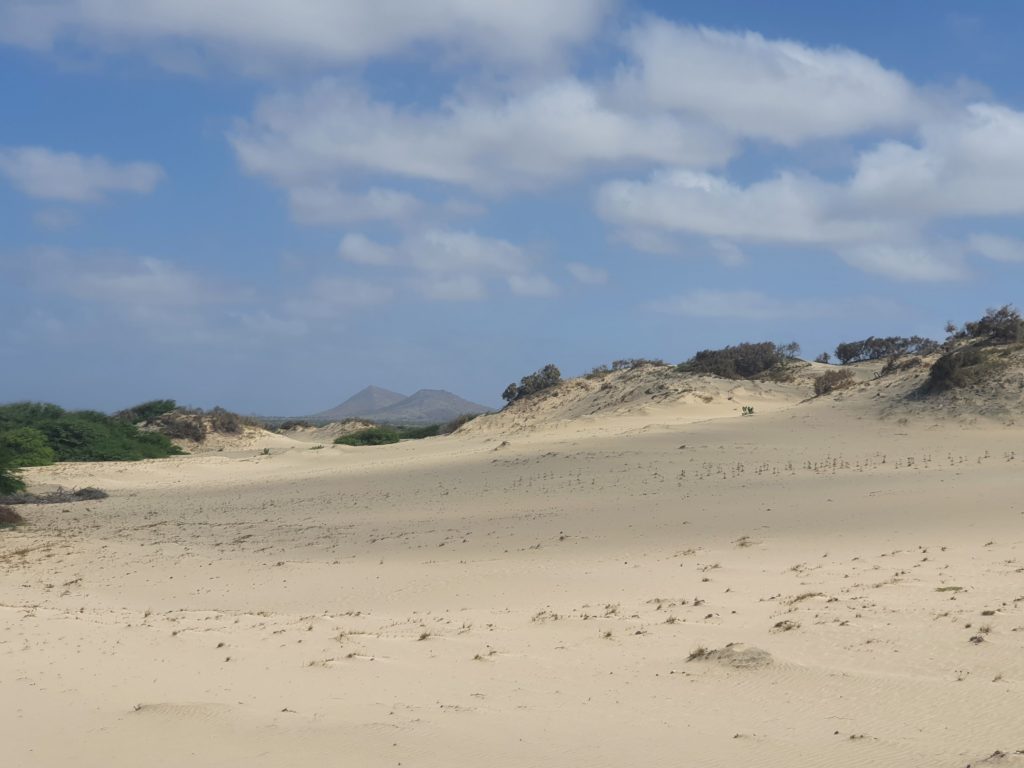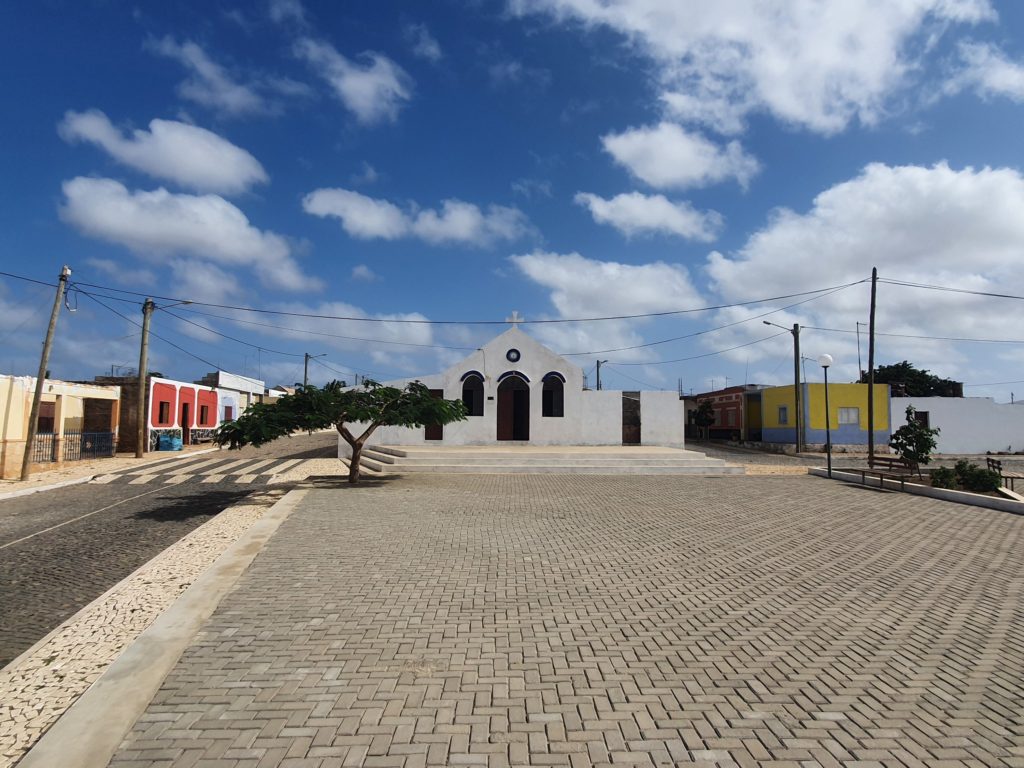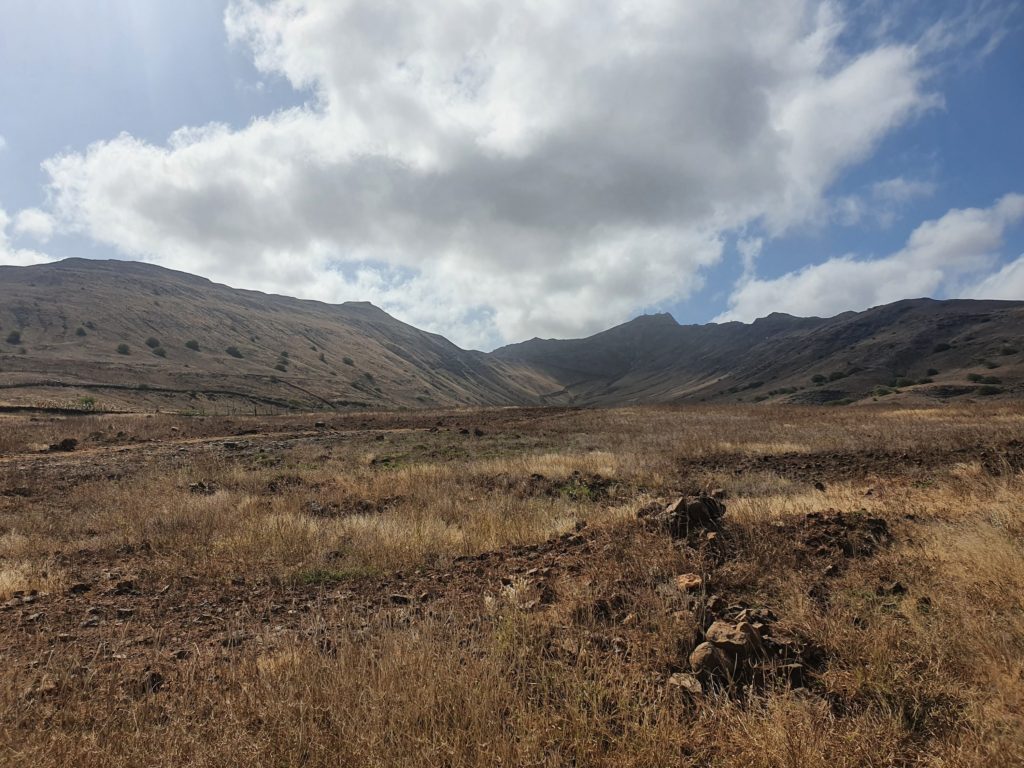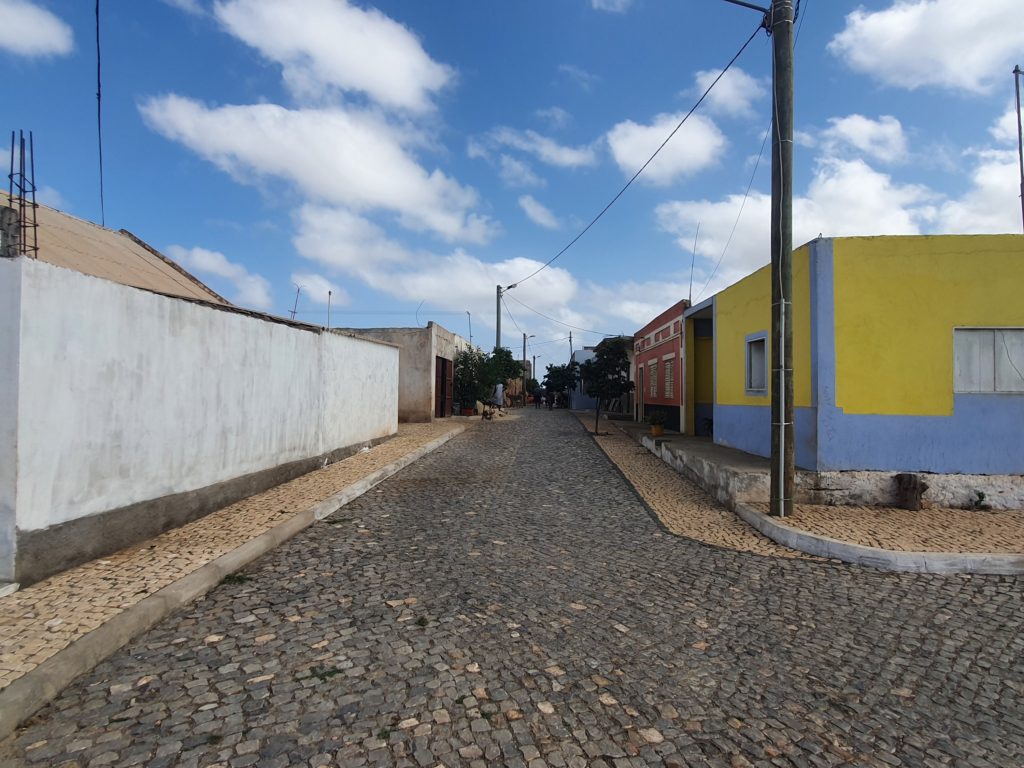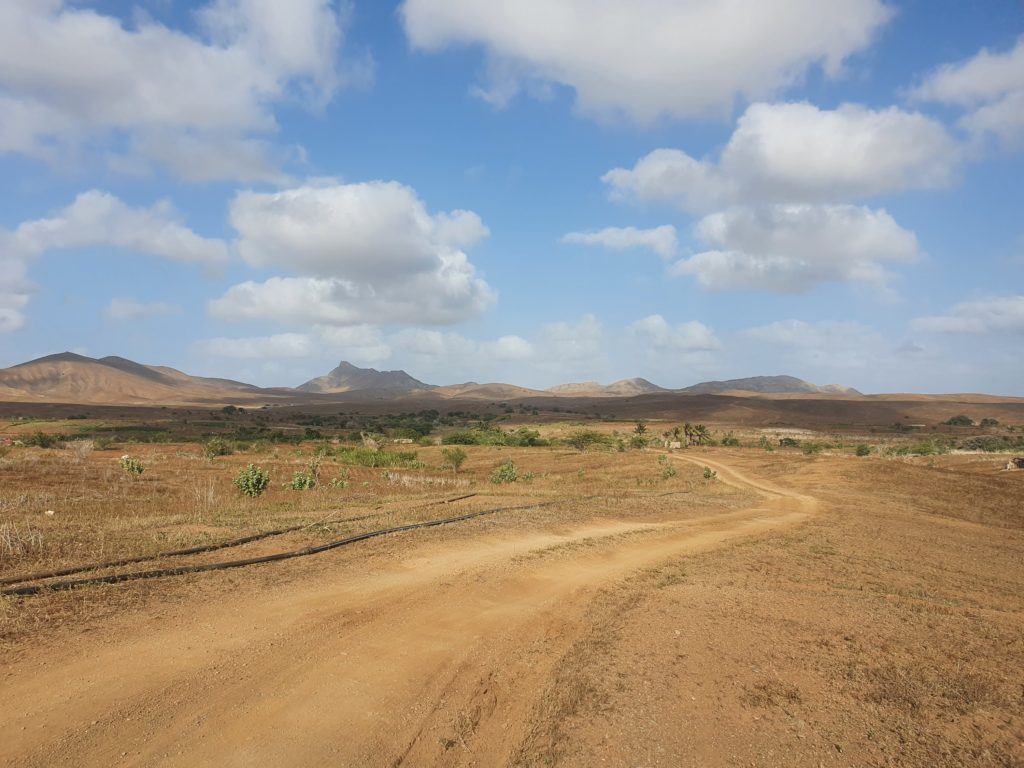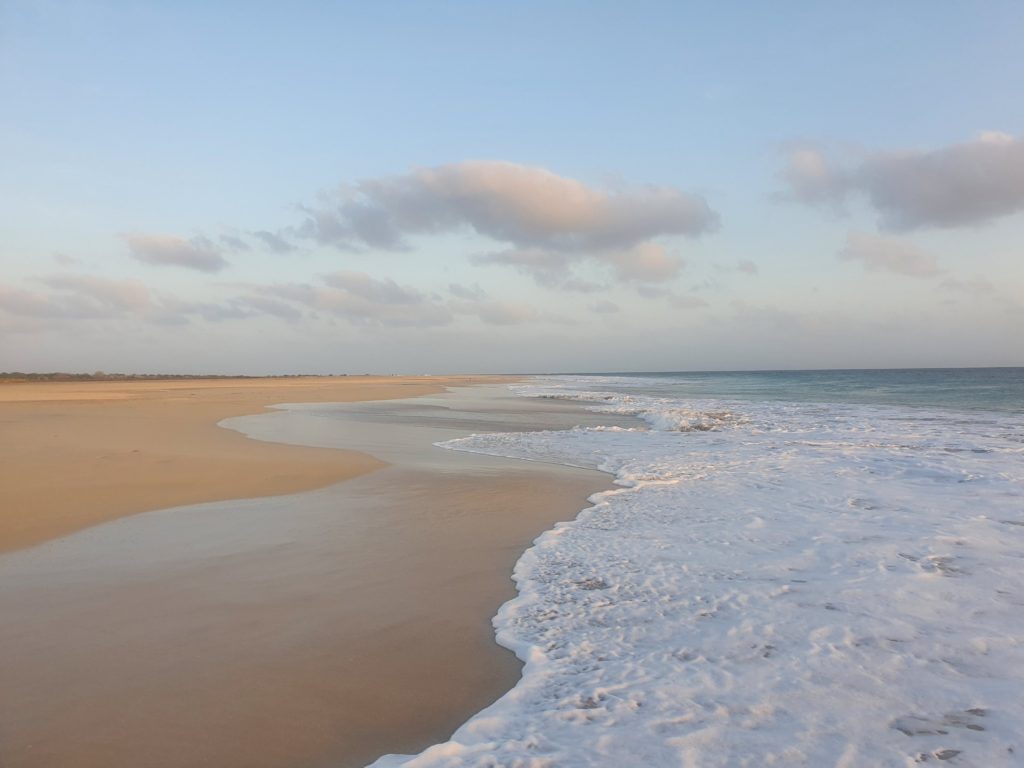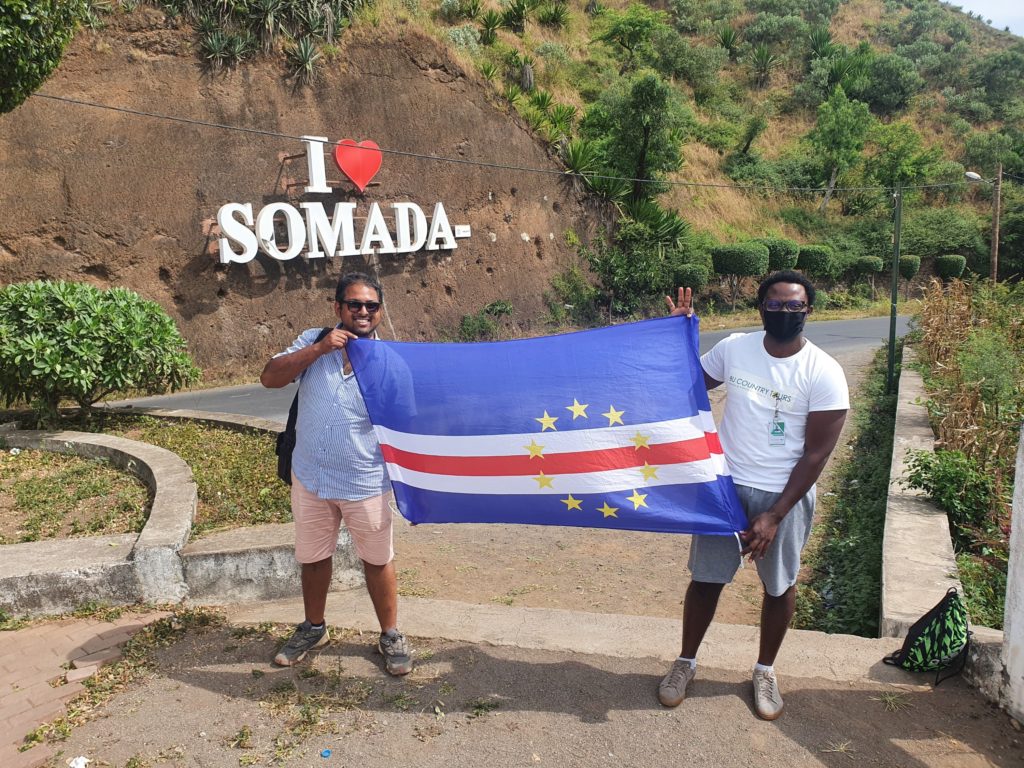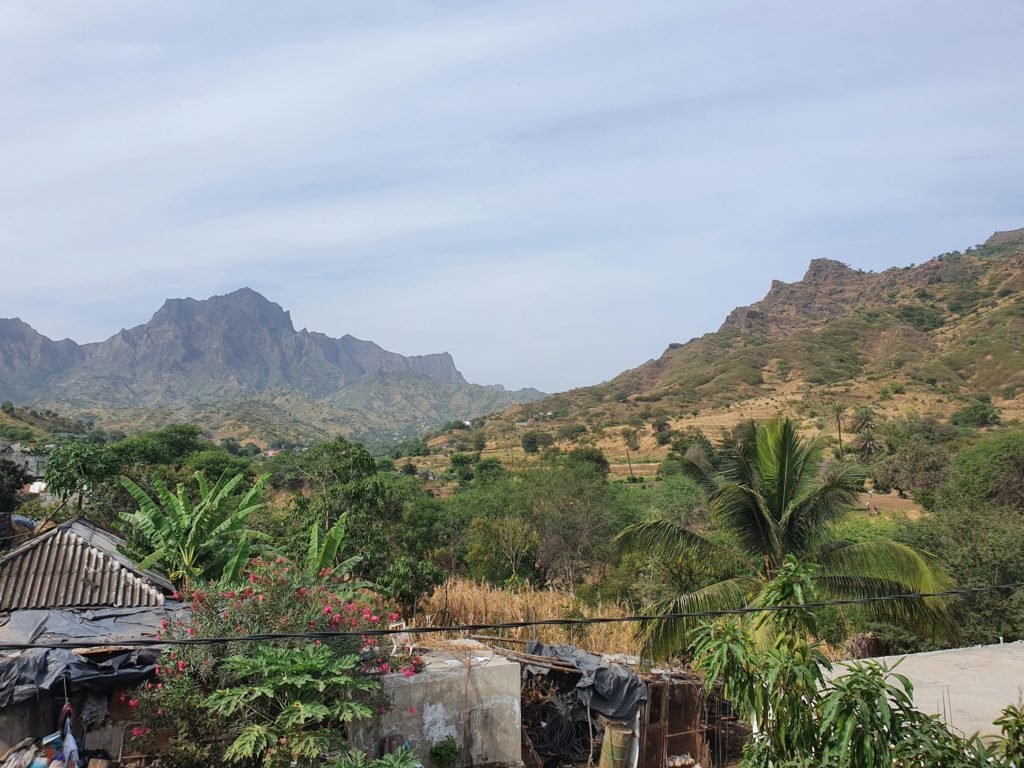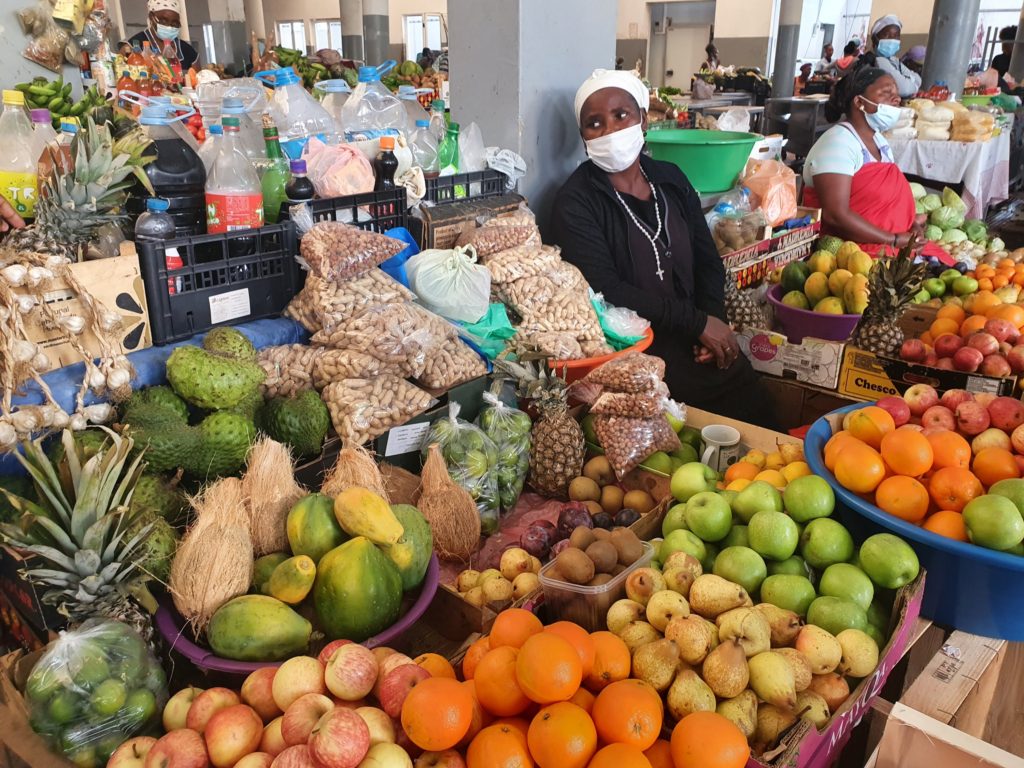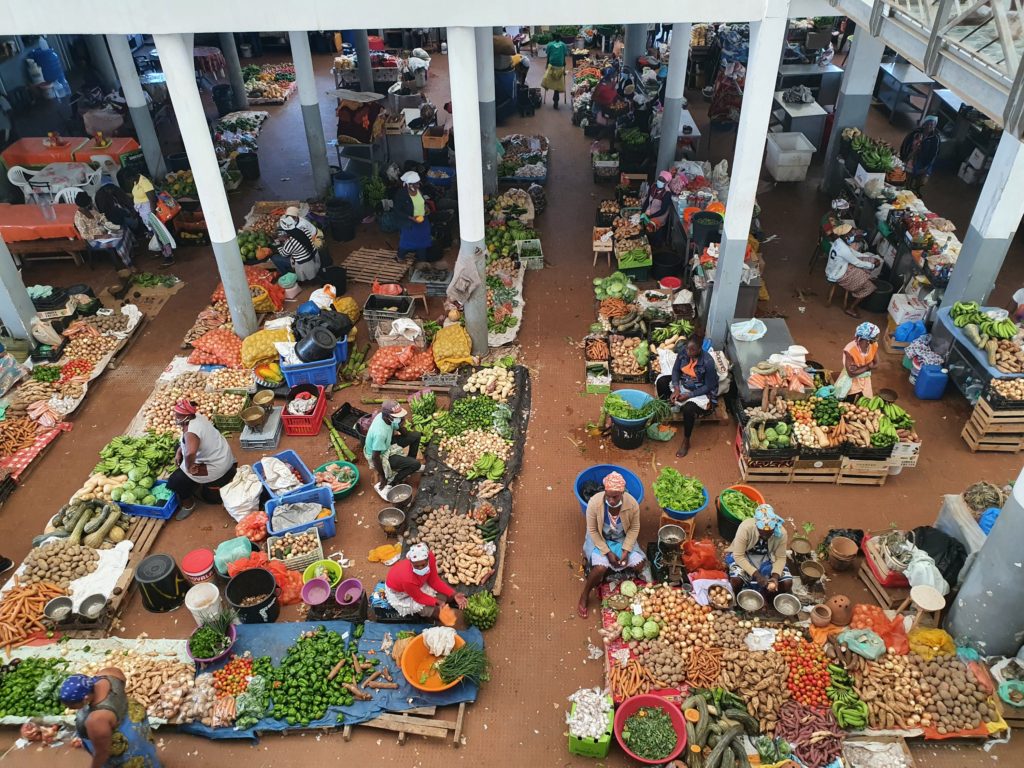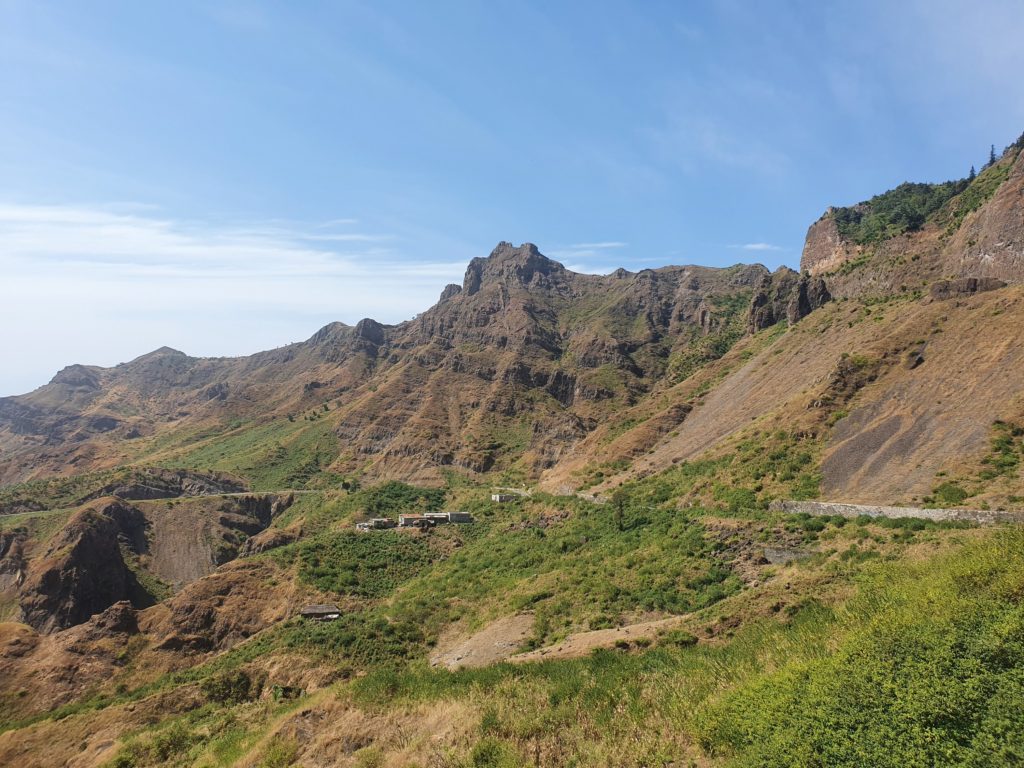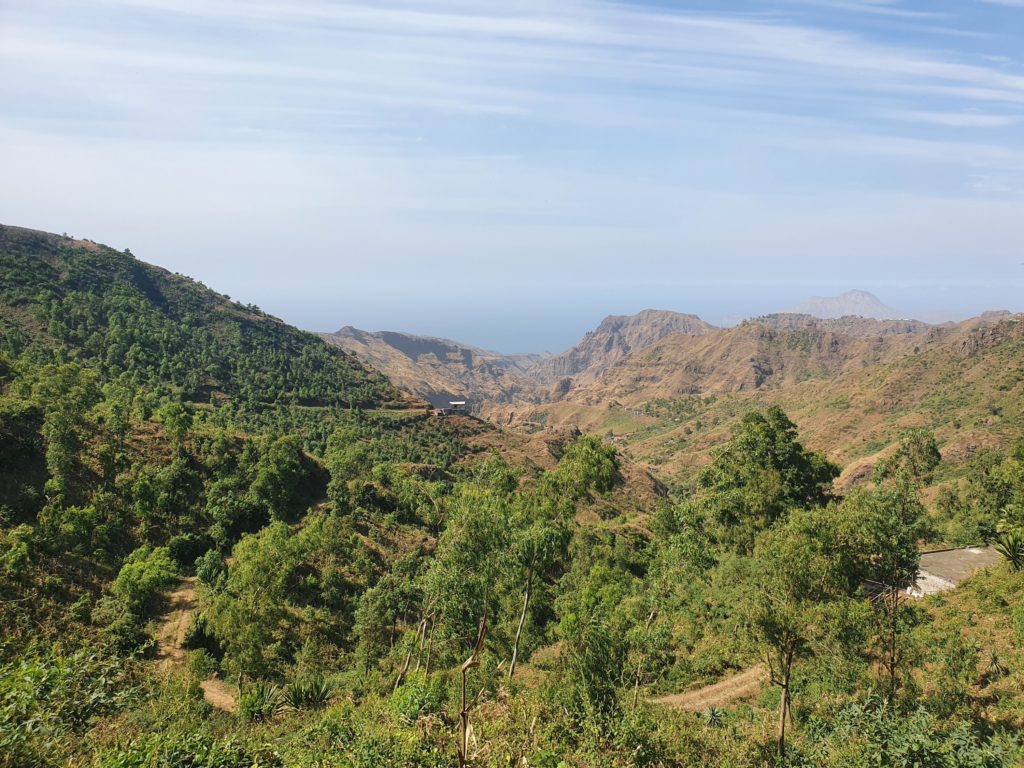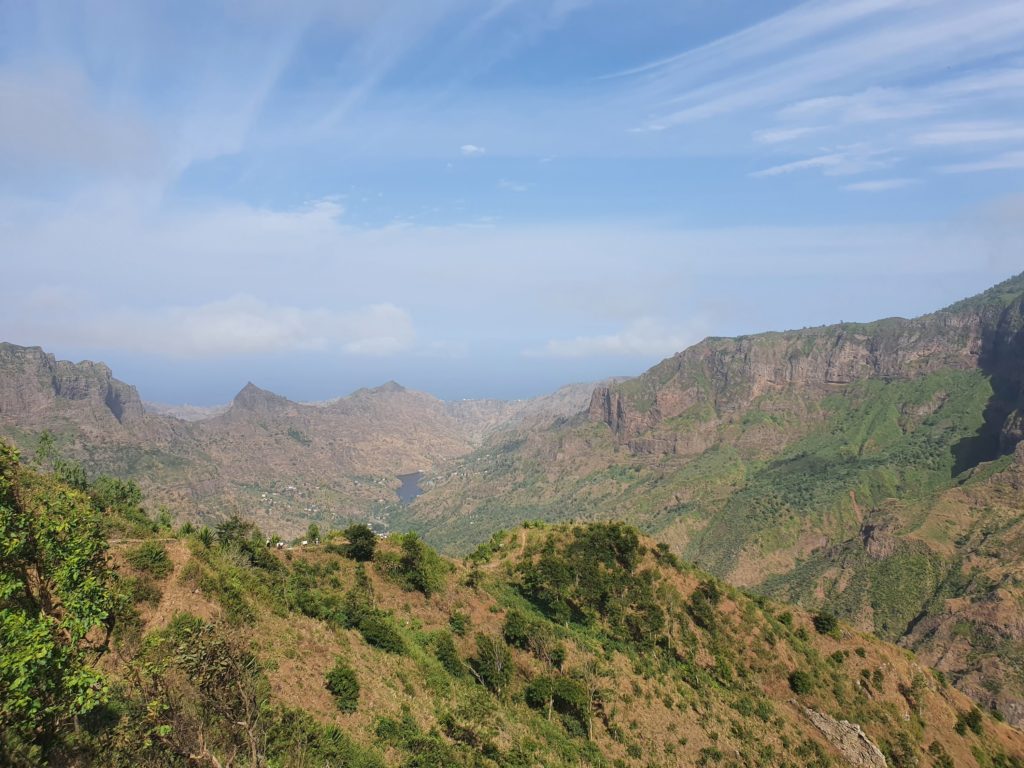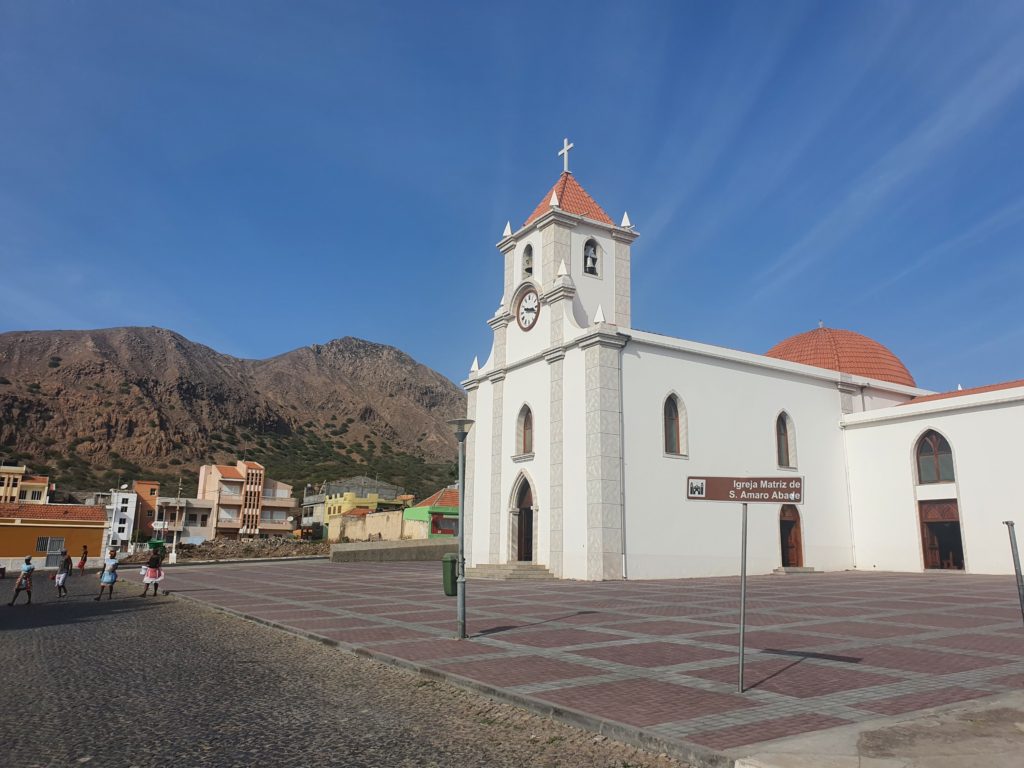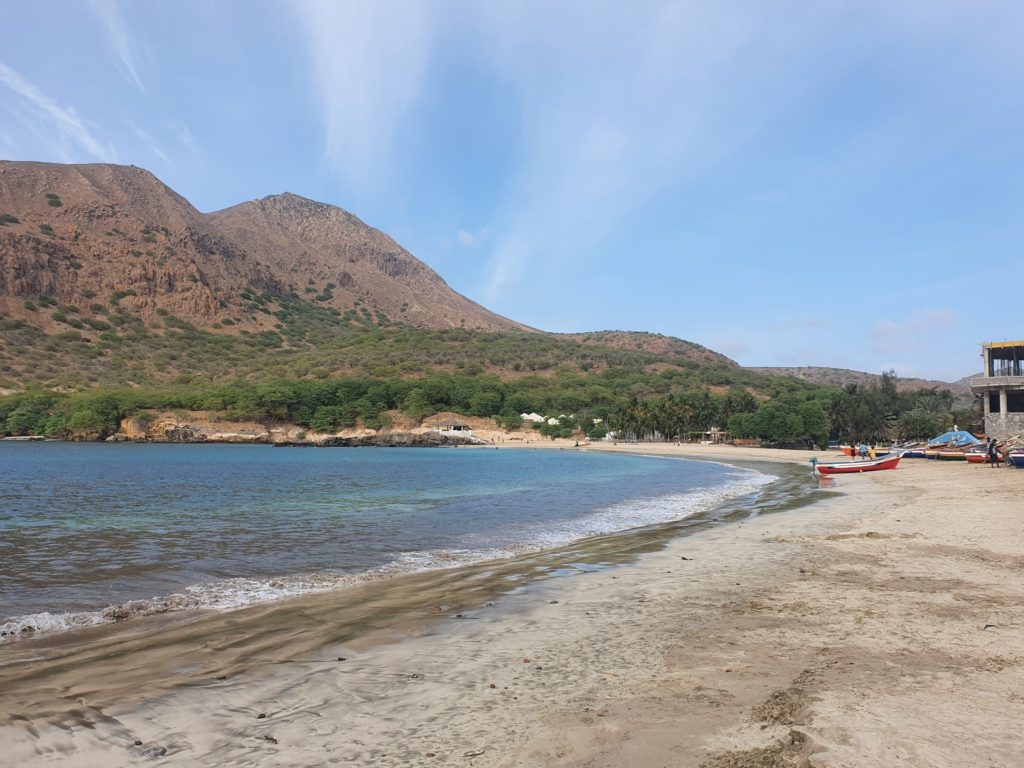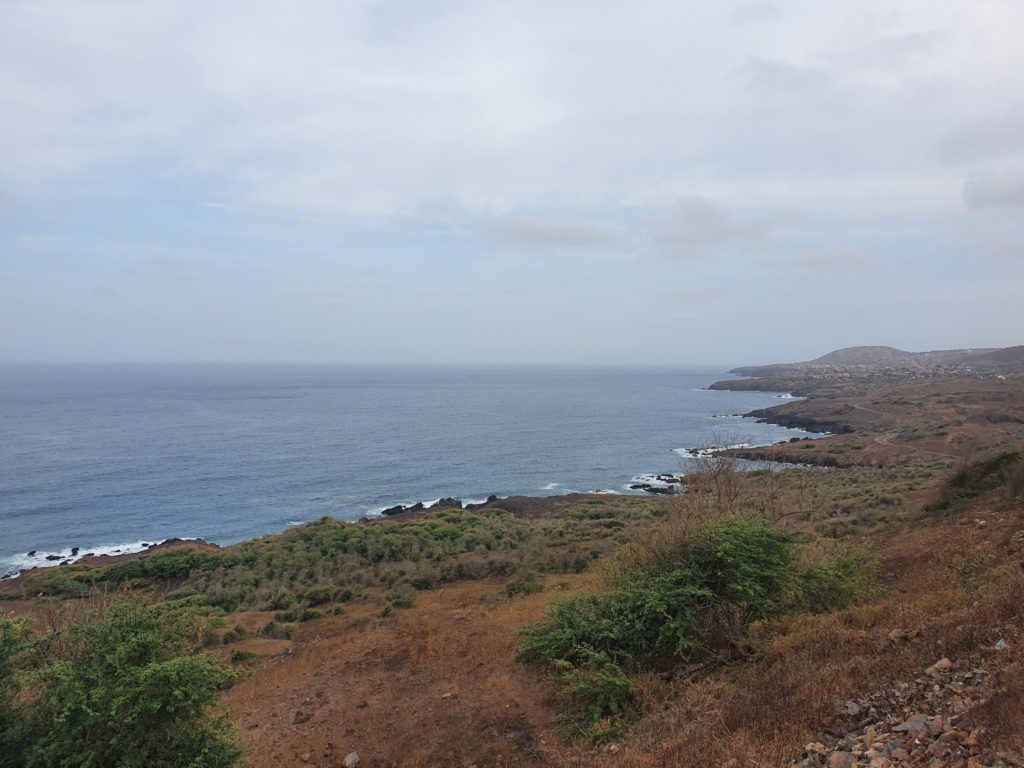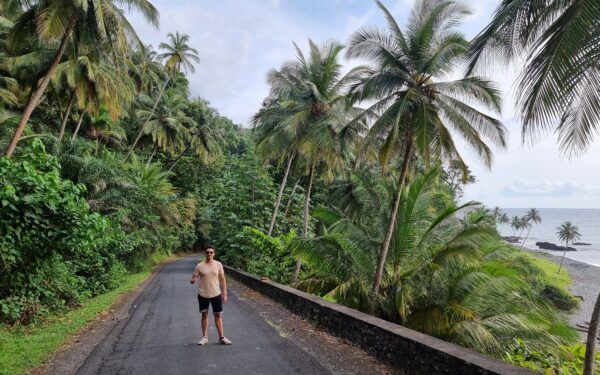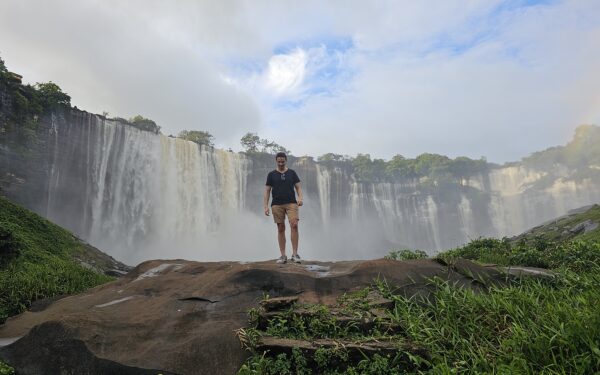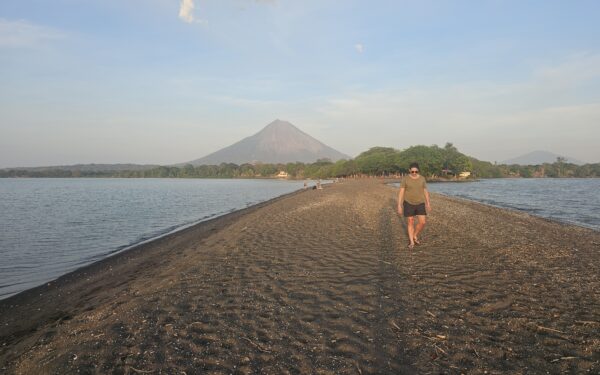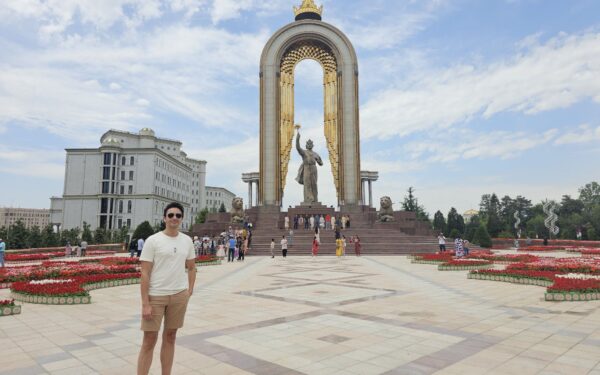Trip Report: Cabo Verde
Visited in December 2020
Why are the flights between Lisbon and Praia only at such an ungodly hour, I kept asking myself. It was already 3am (or 5am in Central Europe), when I arrived in my hotel in Cabo Verde. I had been awake for almost 24 hours and it took 15 hours from the time I left my apartment until I reached my country no. 110. I was pretty wrecked.
Just like most of my trips in the past months, I decided quite spontaneously to travel to Cabo Verde. It was a 3-day trip that allowed me to get rid of my last vacation days of 2020. Three days is not much considering that the country consists of ten islands. However, it was enough time to get a first impression by visiting two of these islands.
What I only found out after I booked the flight tickets was how complicated it is to travel within Cabo Verde these days. I don’t even mean that you have to bring a negative PCR test result in order to enter the country. After all, this is now standard for many countries in the world. An additional hurdle is, however, that you need further COVID tests if you want to travel between the islands.
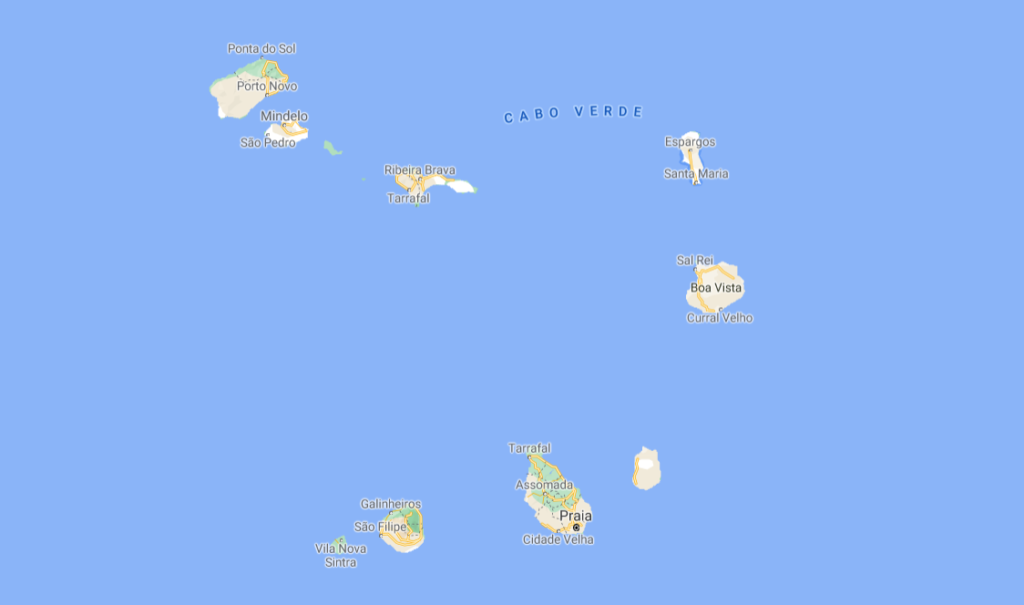
As if that were not enough, I realized that domestic flights are quite limited and sell out very quickly these days. Travel by ferry is not easy either, although there are several connections between the islands. The problem is the duration of these trips. For example, the trip from the main island Santiago, where I was, to the neighboring island of Fogo takes five hours. With three full days in Cabo Verde, I would have already lost two half days for the sea crossing.
I soon realized that I could not travel to all the places I originally wanted to. Especially that I could not visit Fogo was frustrating, since I would have loved to climb the volcano there. There was not enough time for Santo Antão, the northernmost island of Cabo Verde, either. Unfortunately, I would rate these two islands as the highlight of the country. Without Fogo and Santo Antão, I had to find an alternative program for my three days in Cabo Verde.
Warm up in Praia
Fortunately, the alternative program was found quickly and a pleasant day in the capital Praia marked the start of it. Due to the early morning arrival, I left my hotel after 10am to get a first impression of the city. The weather was perfect with 28°C, a bit windy but a welcome change to the cold temperatures at home.
By the way, Cabo Verde, which means green cape, is also often pronounced Cape Verde. The translation of the name is, however, not very popular among the locals. In 2013, the country’s representation in the UN announced that the official name Cabo Verde should no longer be translated. Not even in an English context. The Portuguese explorers named the country after the Cab-Vert Peninsula in Senegal, as Cabo Verde is located a few hundred kilometers away from it. Cabo Verde is thus the westernmost country in Africa.
West Africa is generally a difficult region to travel. The infrastructure in this part of the world is poor and crime is high. Having already been to nine countries in West Africa, it was therefore all the more pleasant to see Cabo Verde, a country that differs enormously from the other West African countries.
Let’s start with the capital. West African capitals can rarely be described as beautiful. At least, the ones I’ve seen so far have been more characterized by incredible amounts of garbage on the streets, unpretty architecture, lots of dust, many stray animals, and terrible traffic. Besides, many of these cities don’t really offer much things you could call tourist attractions.
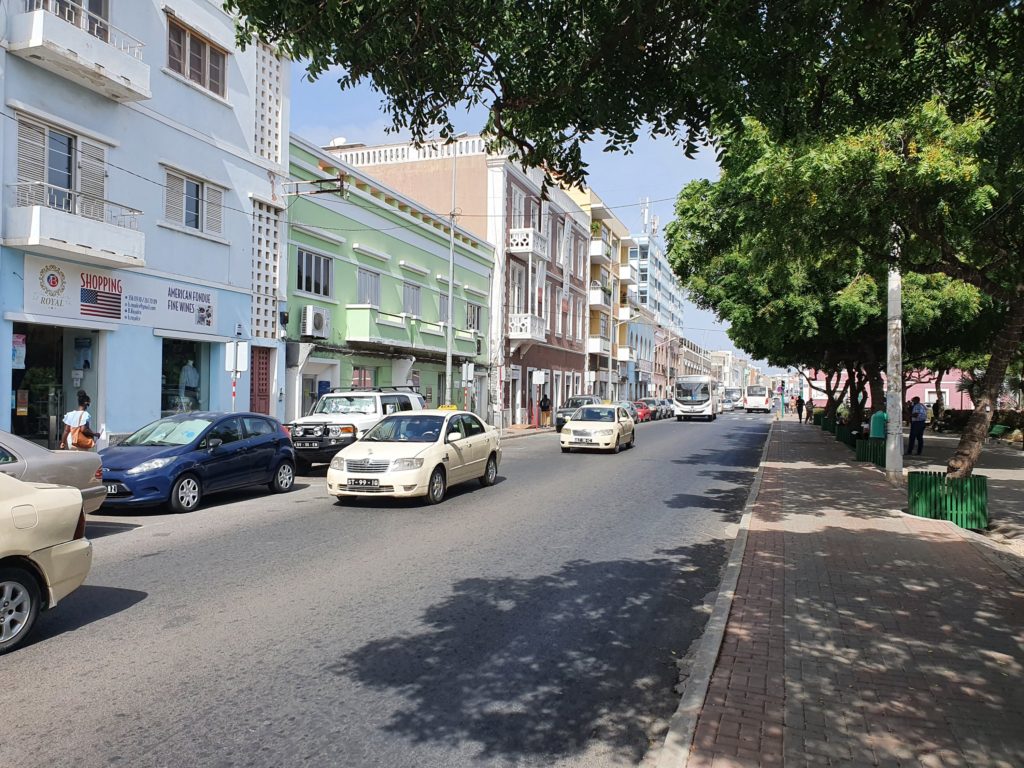
But no rule without exception, because Praia is definitely not like what I just described. Praia has a nice city center, the streets are clean and in comparatively excellent condition. Already after a short time it was clear to me that Praia does not look and feel like Africa. Praia looks and feels more like a European city. If you have already spent time in West African cities, it is even more pleasant to see such a laid-back and nice city like Praia.
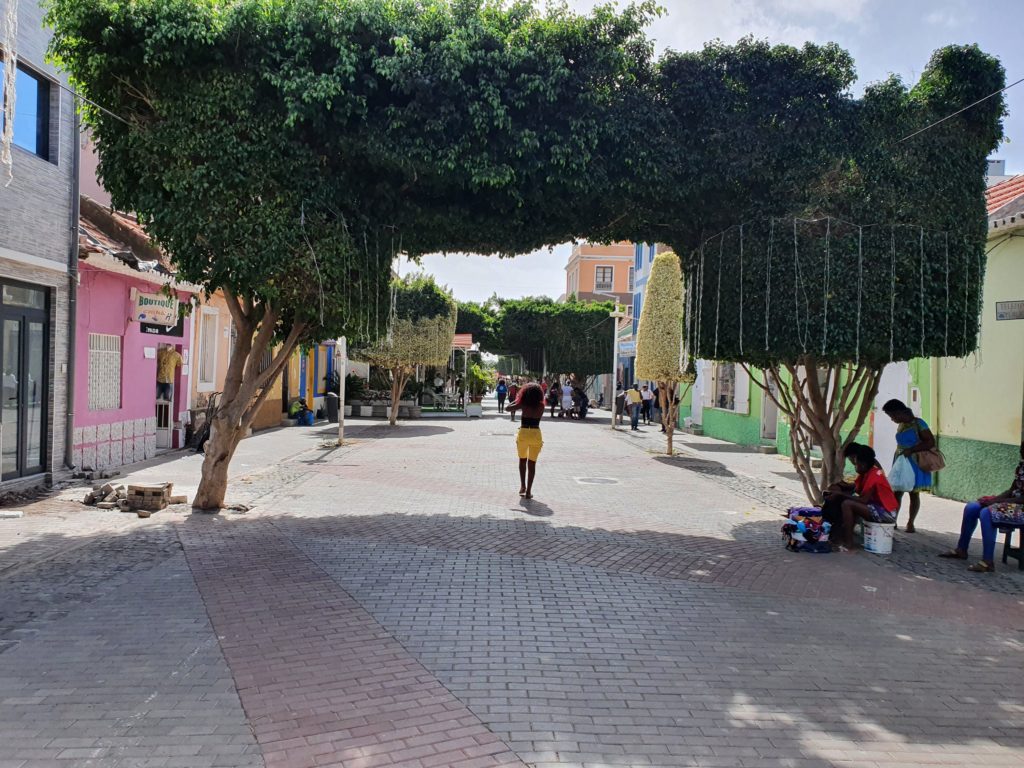
However, it’s not just Praia that looks European, the locals also do their part. Cabo Verdeans definitely dress more modern than their neighbors, they have modern hairstyles and wear fancy accessories. This is not the poor West Africa I saw before, but one of the most developed countries on the continent. What was also more pleasant was that the locals were far less pushy than those in countries nearby.
While I was taking pictures on the “plateau”, the city center of Praia, a man approached me. He introduced himself as a tourist guide and offered to take me to the botanical garden the next day, because he would already lead a couple from Belgium there. I gratefully declined, as I already had an activity for the next day.
Now, in probably any other West African country that would have resulted in a pushy persuasive speech. “You’d better come with me, I’ll give you a better price,” would have been the response there. That was not the case in Cabo Verde, though. Instead, the man wished me a nice vacation and thanked me for visiting his country.
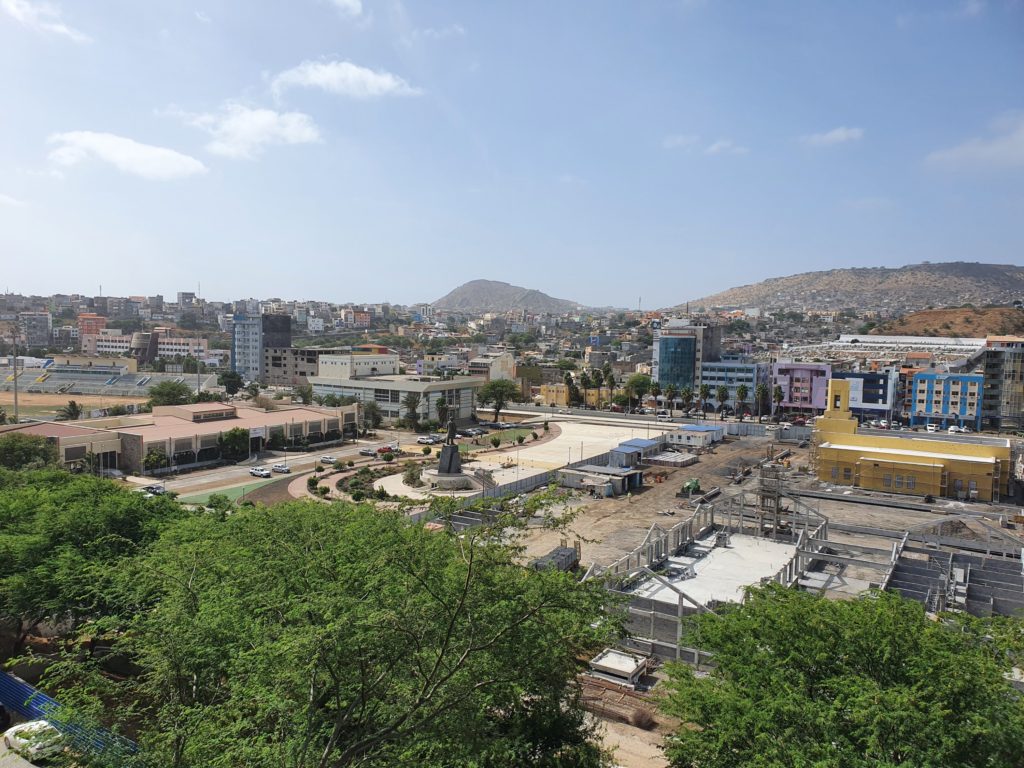
I later met my actual guide, Admilson, who organized the next two days for me. He first took me to a COVID test center, as I needed a new test for my trip to the neighboring island of Maio the day after. To my surprise, however, there was no throat or nose swab waiting for me but a blood sample. An antibody test, which is completely useless if you ask me. After all, the result doesn’t tell if I’m currently infected. It just shows if I’ve had the virus in the last few months (which apparently wasn’t the case).
I spent the afternoon drinking coffee and people watching before taking a cab to Cidade Velha. This was the first town of Cabo Verde and a UNESCO World Heritage Site in the west of the island. I found out that you don’t have to haggle much with the cab drivers here. The price my driver quoted was the same as my guide had told me earlier. I also paid the price I found on the internet for my ride from the airport to the hotel. Seriously, after years of haggling on my travels, I now really appreciate it when I’m somewhere I don’t have to do it.
I soon learned that the Cabo Verdeans are incredibly nice people. All I met were more than happy to see tourists in their country. My taxi driver to Cidade Velha even asked me occasionally if he should stop so that I could take a few pictures. This is also a rather unique experience, because nowhere in the world did a cab driver offer me to stop just for a few photos. Normally, they are glad when their job is done as soon as possible.
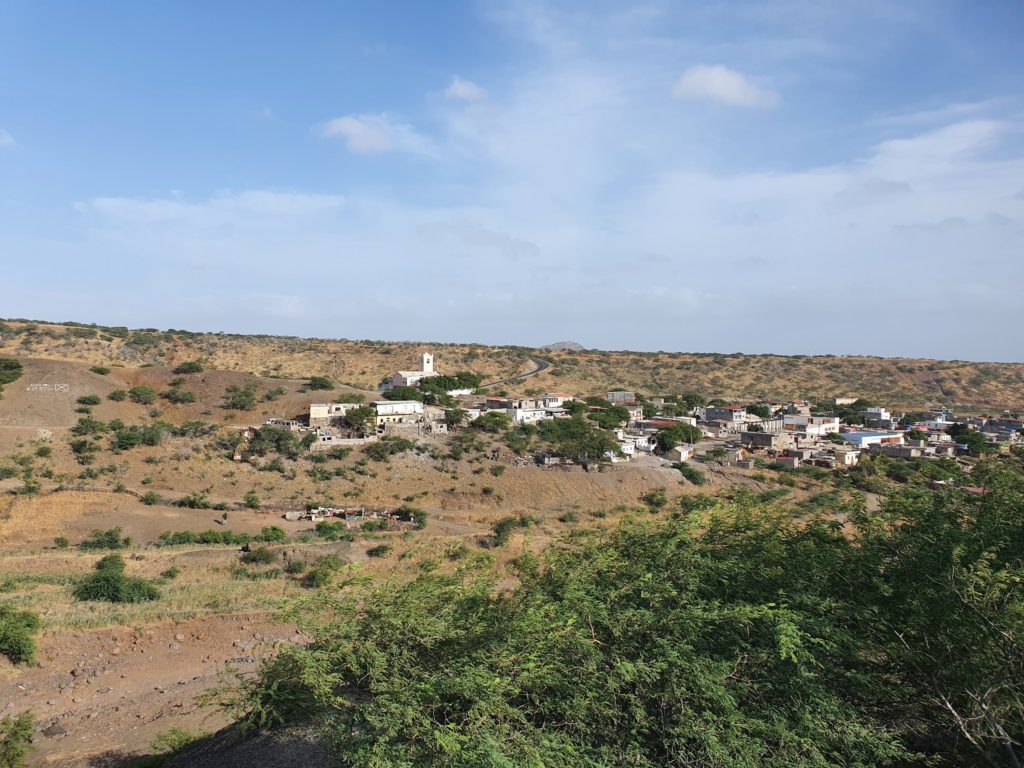
Cidade Velha is about 20 minutes from Praia and just before we arrived, we made an unintended stop. A car accident blocked the entire road, the only one to Cidade Velha, and traffic came to a complete halt. “This is Africa” I thought smiling, having previously found that Cabo Verde was not really Africa.
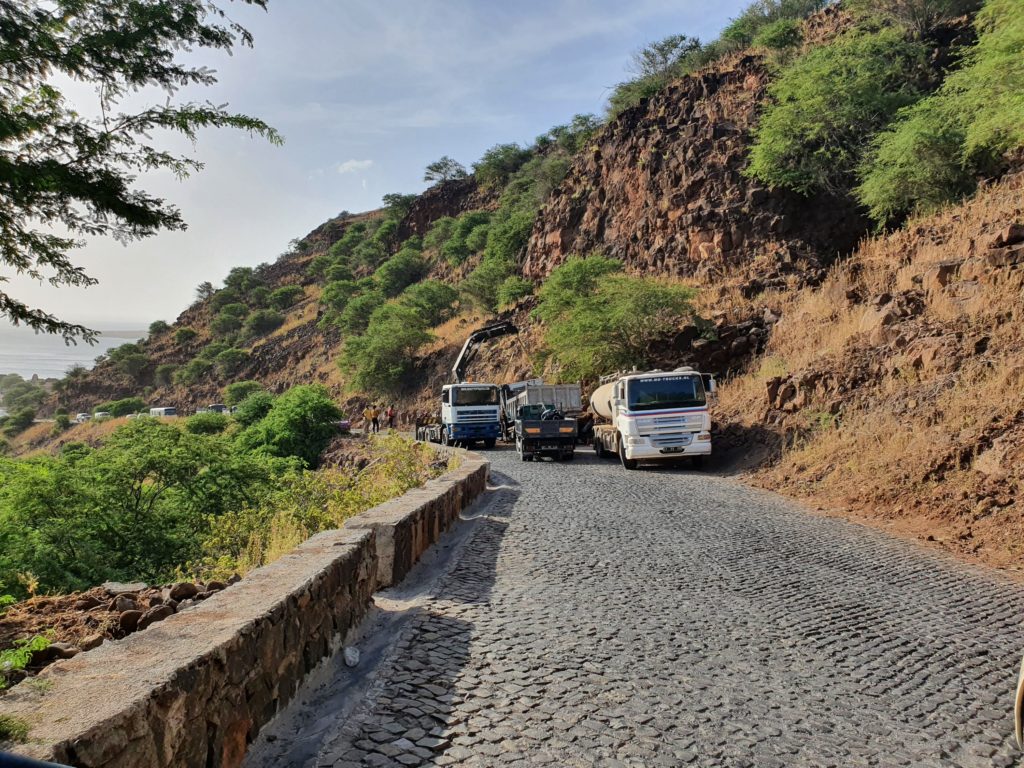
The accident blocked the road for about half an hour, which meant that I arrived too late to visit the Cidade Velha AND the Forte Real de São Filipe. The Fortress was my main reason for visiting, but it was already 5:30pm and the fortress closes at 6:00pm. On top of that, there are no taxis in Cidade Velha and it would probably have taken at least half an hour on foot before I reached the fort.
So I spent a little time in Cidade Velha. I refrained from walking up Rua da Banana, the oldest street built by the Portuguese in Cabo Verde, after witnessing a stray dog attacking a local there. In general, I found the stray dogs in Santiago to be a real nuisance, as there are many and their behavior quite aggressive. However, this is only one of very few things I would criticize about Cabo Verde.
That first day in Cabo Verde came to an end a few hours later. It was a pleasant day and a good start in the country. As I had to get up quite early the next day, I did not do anything in the evening and went to bed soon.
A day in Maio
My alarm clock rang at 5am the next day and half an hour later I was standing at the port of Santiago. A trip to the neighboring island of Maio was my activity on that day. The ferry between these two islands usually goes once a day, but on some days not at all and on Fridays even twice. Because this day was a Friday, it was therefore possible to visit the island without having to spend the night there.
Admilson said that the ferry takes about two hours, which was a bit optimistic. It was about 9 o’clock when I finally arrived in Maio. All passengers lined up after arrival like in school before everyone had to have their hand luggage, shoes and hands disinfected. Last but not least, everyone had to show the COVID test.
Lenno was already waiting for me at the terminal. He was my guide for today and showed me pretty much every corner of Maio. Maio is not a big island, it takes just 90 minutes to drive around the island. Together with Sal and Boa Vista, Maio belongs to the flat and dry islands of Cabo Verde.
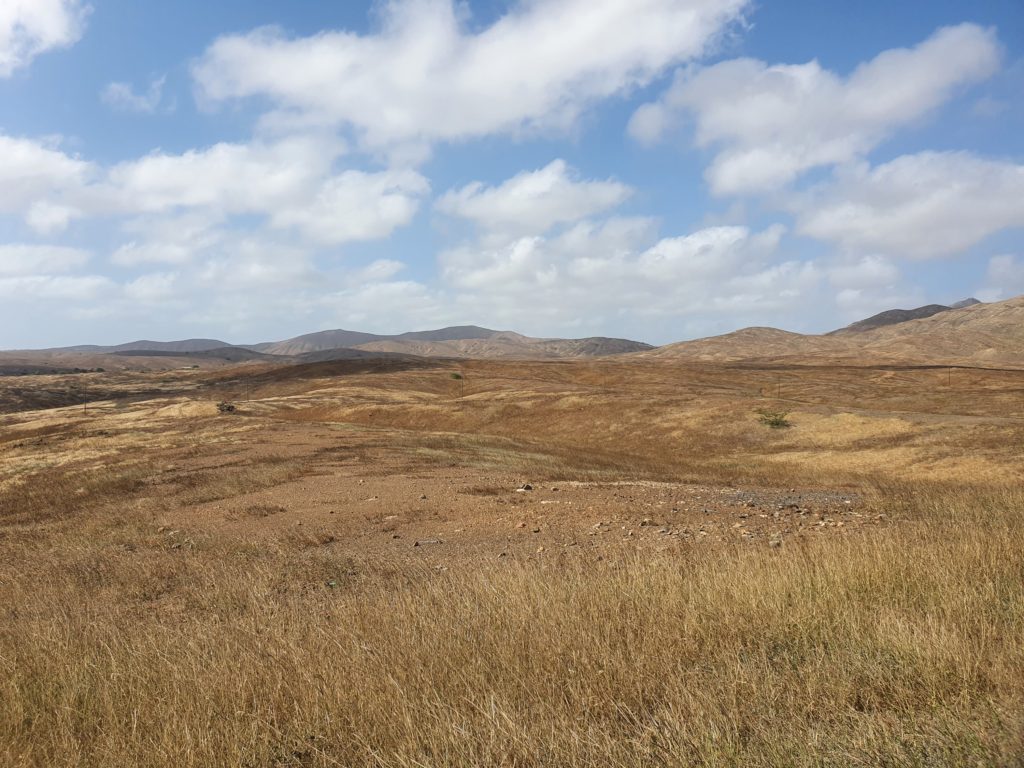
While Sal and Boa Vista are the two tourist magnets of Cabo Verde, Maio is practically untouched. When you arrive in Maio you will notice a resort near the port, but it was never completely finished. Before the owner could finish the construction, he was arrested for drug trafficking. Thus, there are a handful of hotels and guest houses in Maio, but otherwise nothing that would attract mass tourism.
Needless to say, this is a good thing. On the island of Sal, the tour operator TUI practically already has a monopoly, since TUI flies in most of the guests. However, according to my guide, TUI does everything they can to keep their customers away from Cabo Verdeans by telling them how dangerous the country is.
As a result, most TUI tourists spend their time in Cabo Verde exclusively at their resort. The very brave may even book a TUI tour. Of course, TUI makes sure that the tourists do not interact with locals on these tours. The money of the tourists thus goes exclusively into the pockets of TUI, while local businesses see nothing of it.
My ferry back to Santiago wouldn’t leave until 10pm, so we had almost 13 hours to explore the island. That was more than enough time, because there aren’t really many things in Maio that you would call tourist attractions. Maio is rather a sleepy and idyllic island with a few thousand inhabitants living in twelve villages scattered around the island.
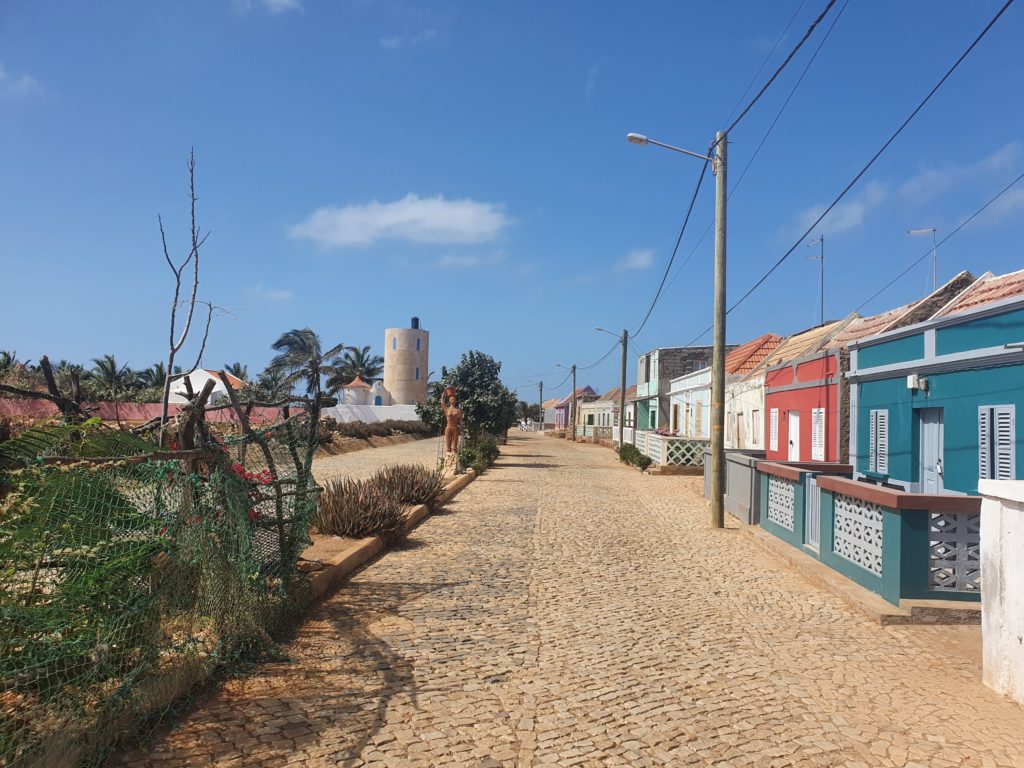
Lenno pointed out to me that many of the houses we were passing by are owned by foreigners. While more Cabo Verdeans live abroad than in their own country, many Europeans choose to settle in Cabo Verde. Many of the immigrants probably forgo Sal or Boa Vista as their new home. That they choose Maio as their new home instead makes sense to me. The temperatures are high all year round, everyone knows everyone here, and yet you have your peace and quiet if you want it.
At least, that’s what a Frenchman thought who had built a house in Maio until one morning a few Interpol helicopters landed on the island and arrested the gentleman. He was another internationally wanted drug lord who thought that Maio would be a great place to hide. As he was also extremely popular on the island, the whole village was crying when Interpol arrested him, Lenno explained to me.
When we left one village, it took usually less than ten minutes before we arrived at the next one. Just like in Praia, many of the houses in the villages were of bright colors, as can be seen in other former Portuguese colonies in Africa. In addition, each village had its own, usually tiny, church, which represented the village center, so to speak.
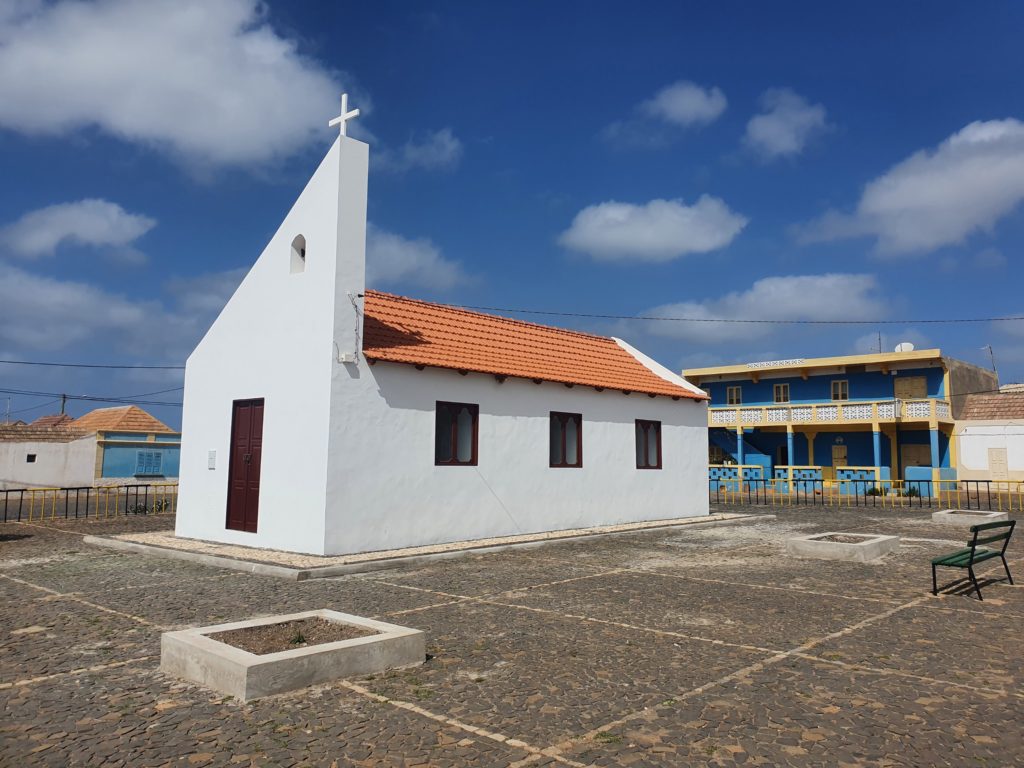
We later visited the sand dunes on the island, drove along the hilly landscapes of the interior, visited a farm and a well powered by solar energy. Nevertheless, the highlight in Maio was certainly the amazing beach, where we arrived in the late afternoon.
On the south side of the island is a beach that stretches for 6km and you practically have it to yourself. According to Lenno, the beaches on Sal are a bit wider, but definitely more crowded. Trading the vastness of the beach for the crowds seemed like a good deal for Maio in my opinion.
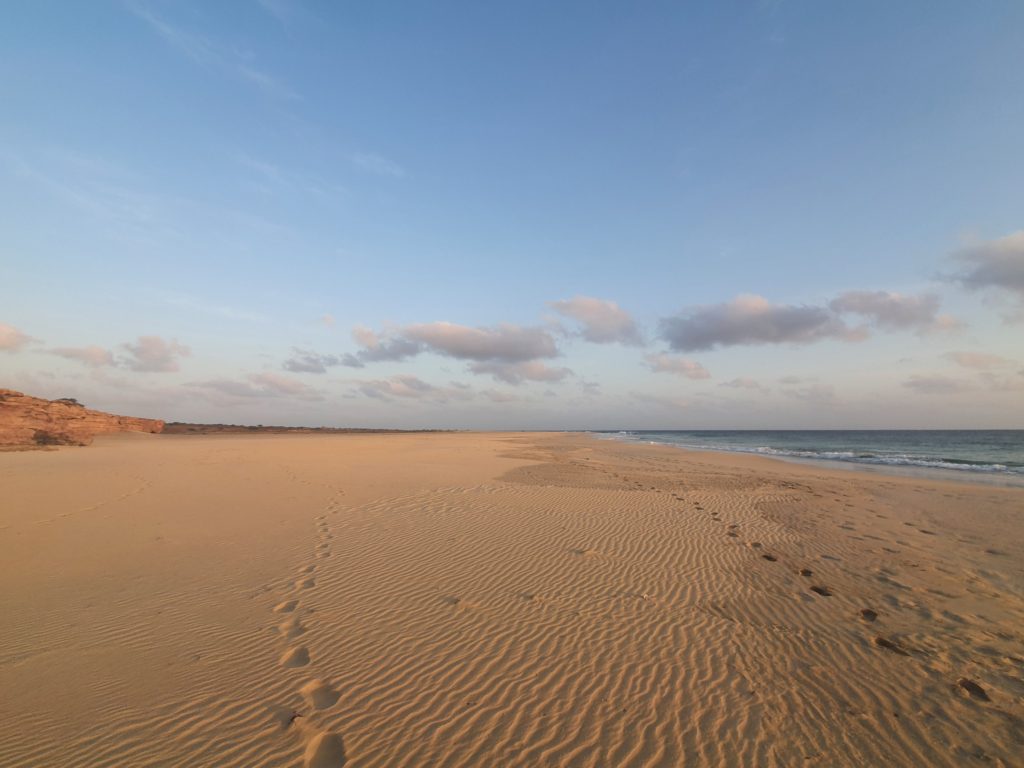
I left Maio a few hours later and arrived in Santiago just before 1am. It was quite a long day and I was almost as exhausted as when I arrived in Cabo Verde at 3am.
Is Maio worth it? Maio is an island that doesn’t attract many tourists. Instead, those tourists who like beaches travel directly to Sal or Boa Vista. Therefore, you could also describe Maio as an off-the-beaten-track destination in Cabo Verde.
I liked the island very much. Even if there is not much to do on the island, I found it a beautiful and cozy place. I also got a glimpse of the flat and dry islands of Cabo Verde without having to see resort after resort. Admittedly, I couldn’t imagine spending several days on Maio, the island would be too quiet for that. For a day-trip, however, it was a great choice.
Exploring Santiago Island
I got company on my third and last day in Cabo Verde, as the legendary Debjeet Sen landed in Cabo Verde, his 153rd country, the day before. Debjeet is a man with an incredible knowledge of travel and beyond and he is well-known in the extreme travel community. I have already met him in Johannesburg last year and I call him a friend since.
Together with Debjeet and a couple from Luxembourg I went on a Santiago Island tour organized by BU Country Tours. Our tour guide was Admilson, who had already organized my COVID test and the trip to Maio.
Santiago is the largest island of Cabo Verde, but driving around the whole island only takes 3-4 hours. Compared to Maio, Santiago looks quite different, though. While Maio is flat and dry, Santiago’s landscapes are green and mountainous. The highest point of the island is almost 1,400 meters high. Even though Admilson said that Santiago is much greener in other seasons than it is now, I found the nature of the island wonderful. On our way to the north of the island we had many opportunities to take photos of the mountain landscapes.
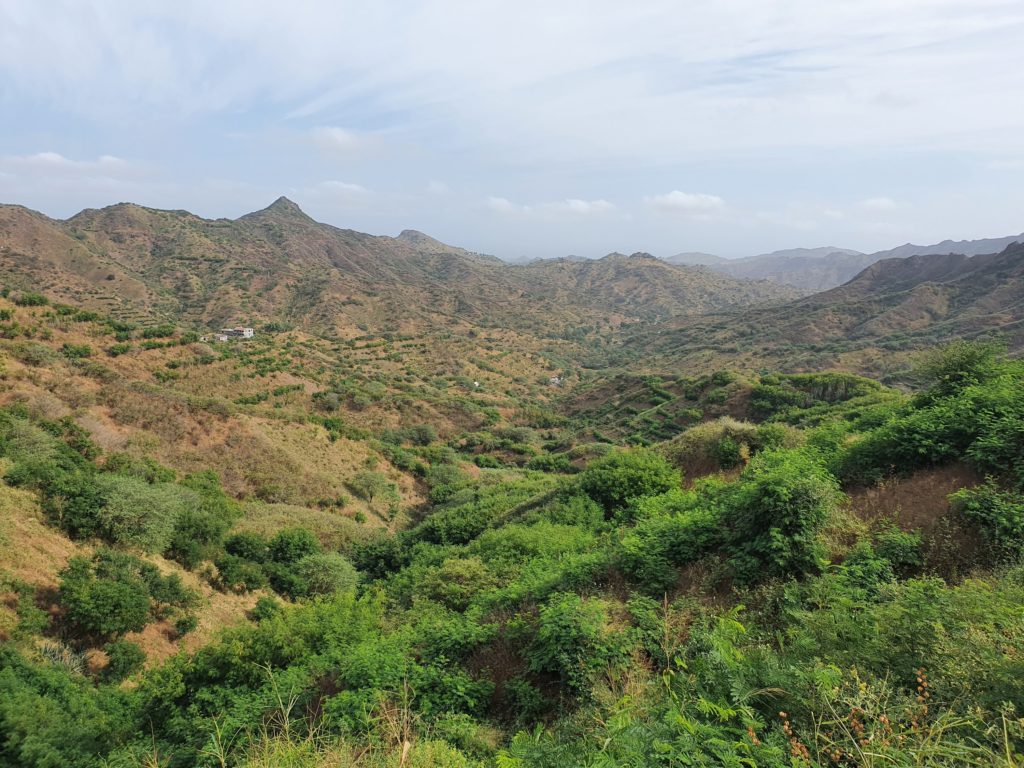
According to Admilson, the highlight of Santiago is Tarrafal Beach, where we spent the afternoon. Honestly, I didn’t really find this small beach special, having the long, deserted beach in Maio as a benchmark. Anyway, Santiago might be the wrong island on Cabo Verde for people looking for beach holidays.
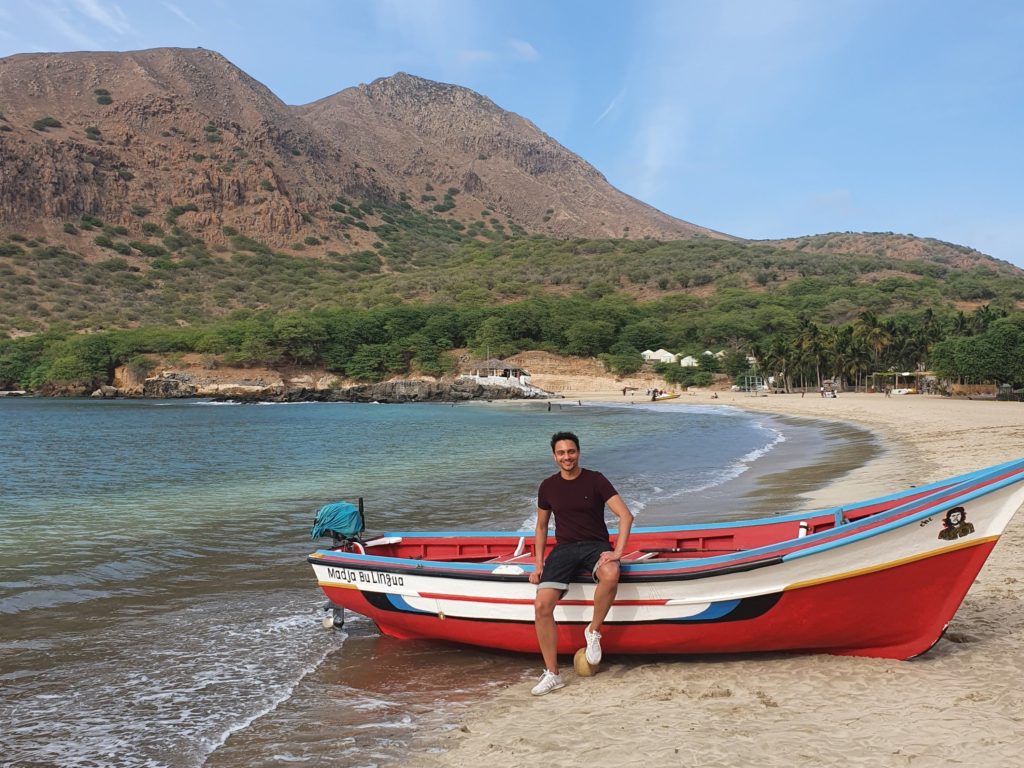
Our tour also included some insights into the culture of Cabo Verde. For example, we stopped at Assomada Market, the largest market in the country, had breakfast served to us by a local family, and visited Cabo Verde’s only tribe.
The tribe consists of about a hundred people and an even larger number of farm animals who live their lives slightly isolated from civilization. During our visit we were shown how the inhabitants make music and prepare food with very simple tools. By the way, it is interesting that you can reserve a cottage in this village on booking.com. This gives tourists the opportunity to spend a few days living with these people.
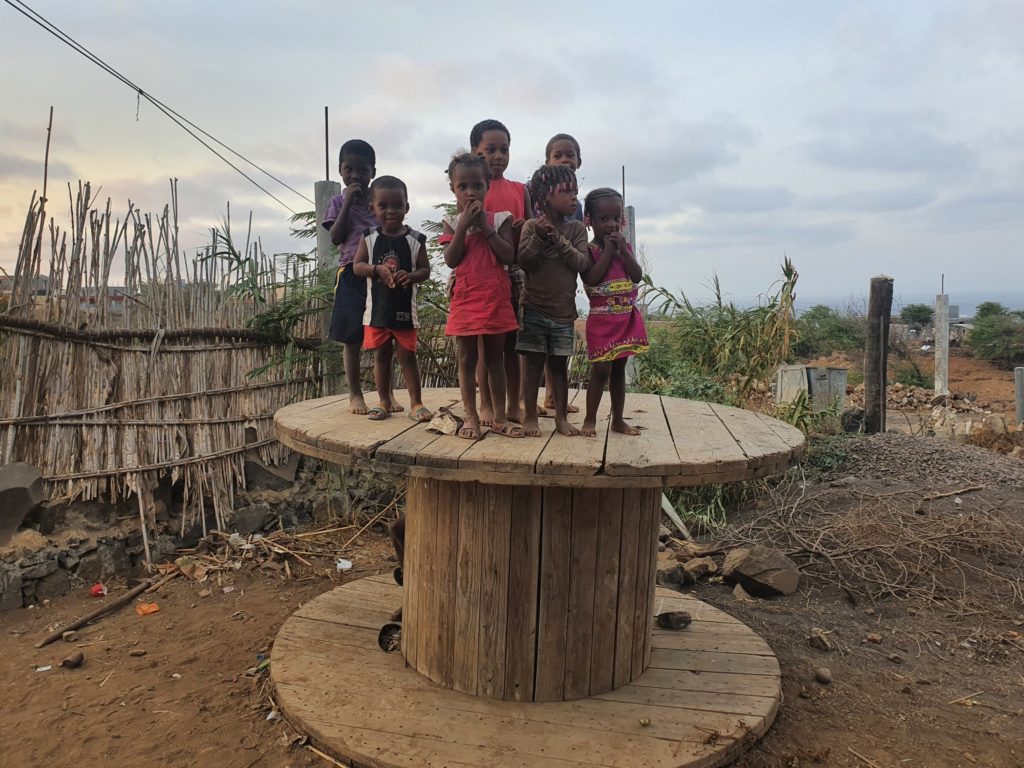
BU Country Tours differentiates itself from other tour providers with such stops. I thought including the locals into the tours was pretty cool. Nonetheless, Admilson told me that it is also very challenging to work with these people and needs a detailed briefing.
So he provided smartphones to the locals he works together on his tours. However, he had to tell them to take a look at it at least once a day to check if there is a new message. Per tourist, the locals receive €10 , which resulted in one or the other local being able to buy some high-tech gadgets after a while.
The tour ended after 10 hours at 7pm. It was a pretty awesome day and I can definitely recommend BU Country Tours if you need a good and professional tour operator in Cabo Verde.
My time in Cabo Verde
I left the country just a few hours later at 3am. The return trip was miserable. I had a 3.5-hour flight to Lisbon, where I had to wait 4 more hours before my flight to Zurich departed. I slept about three hours that night and was once again completely wrecked when I came back home in the evening. As a matter of fact, I did not really sleep a lot during that trip.
For Cabo Verde, however, these struggles were worth it. After getting a first impression of the country during my three days, I would describe Cabo Verde as a pretty cool and well-organized travel destination. The country is diverse and beautiful, the people are friendly and traveling around the country is easy.
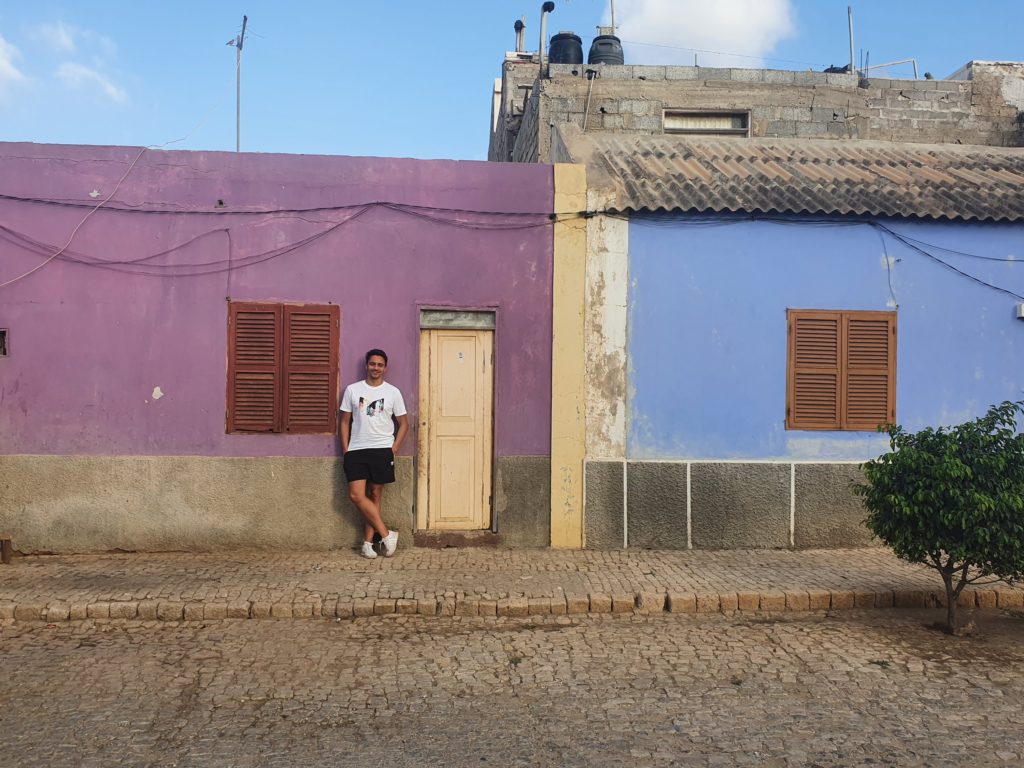
Will I come back someday? I am pretty sure, yes. I haven’t seen the best of the country yet, the islands of Fogo and Santa Antão, and I could even imagine spending more time in Santiago.
What the country will look like when I eventually come back is another question. In Praia, a Chinese construction company is currently building a mega resort to make the country attractive to the Chinese as a travel destination. According to Admilson, this construction will only bring disaster to Cabo Verde. Crime and prostitution will increase, while Cabo Verde as a country will become more and more dependent on China.
Let’s hope that he is wrong and that this wonderful country remains as it is.
